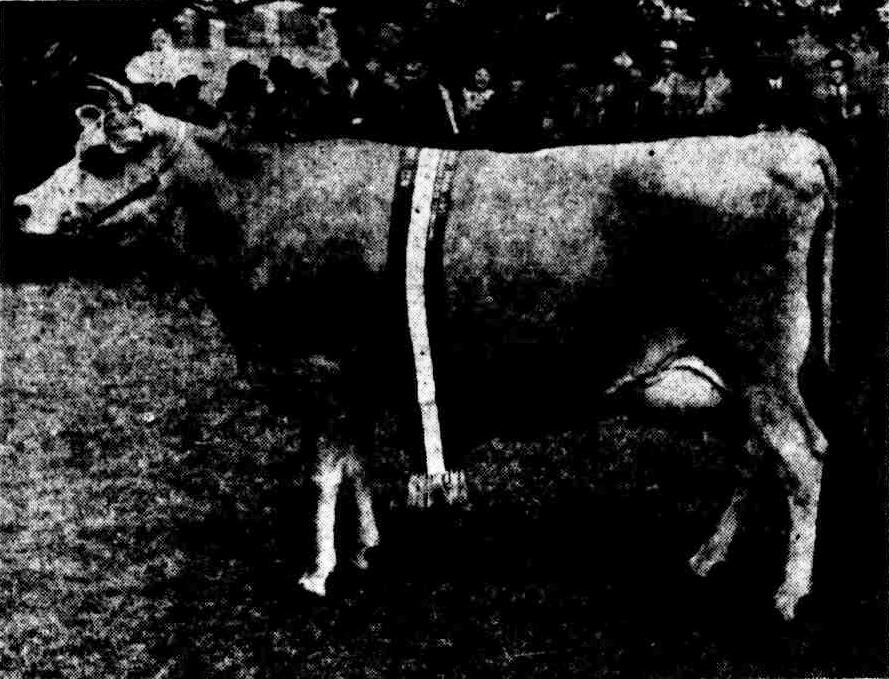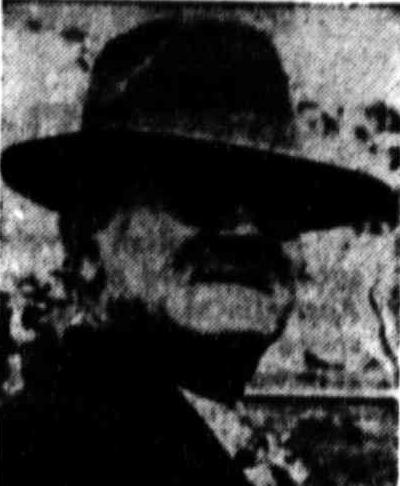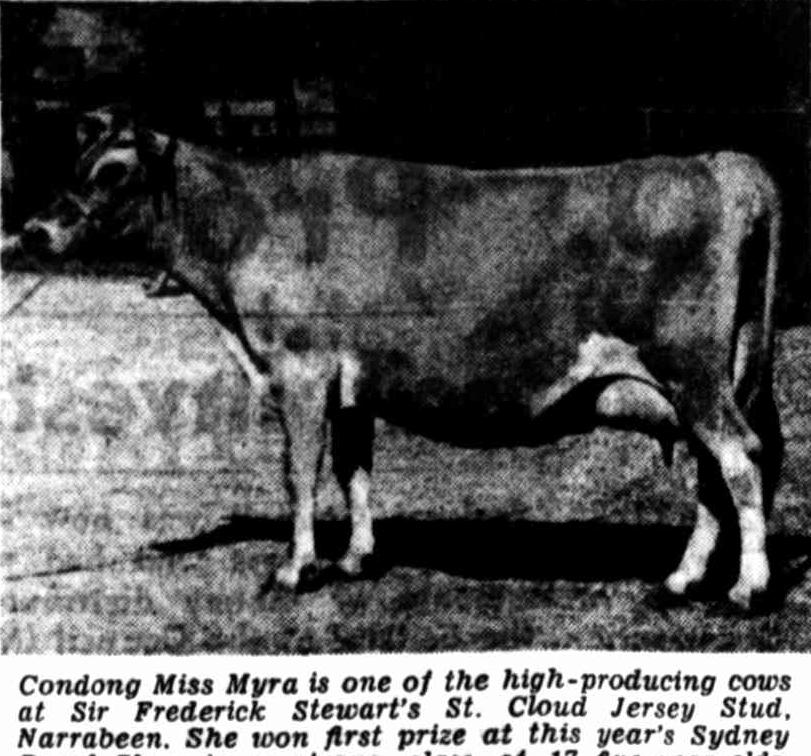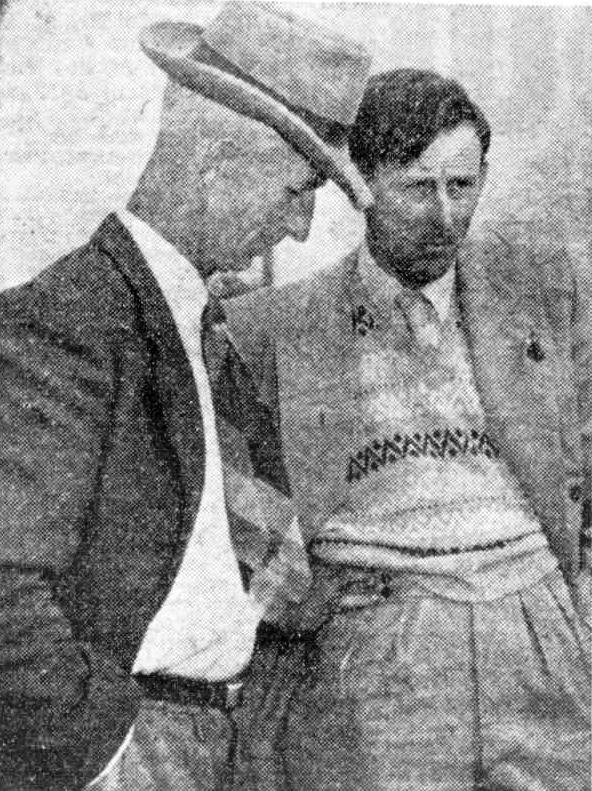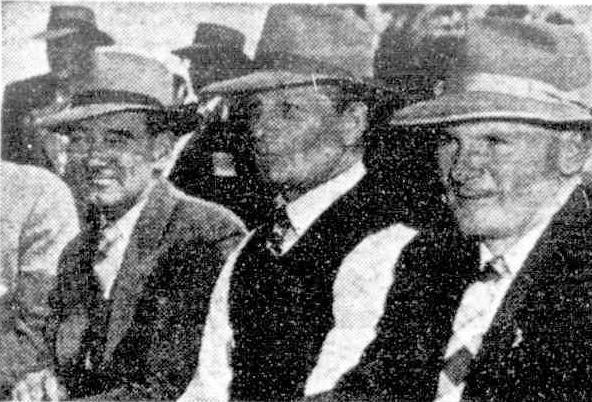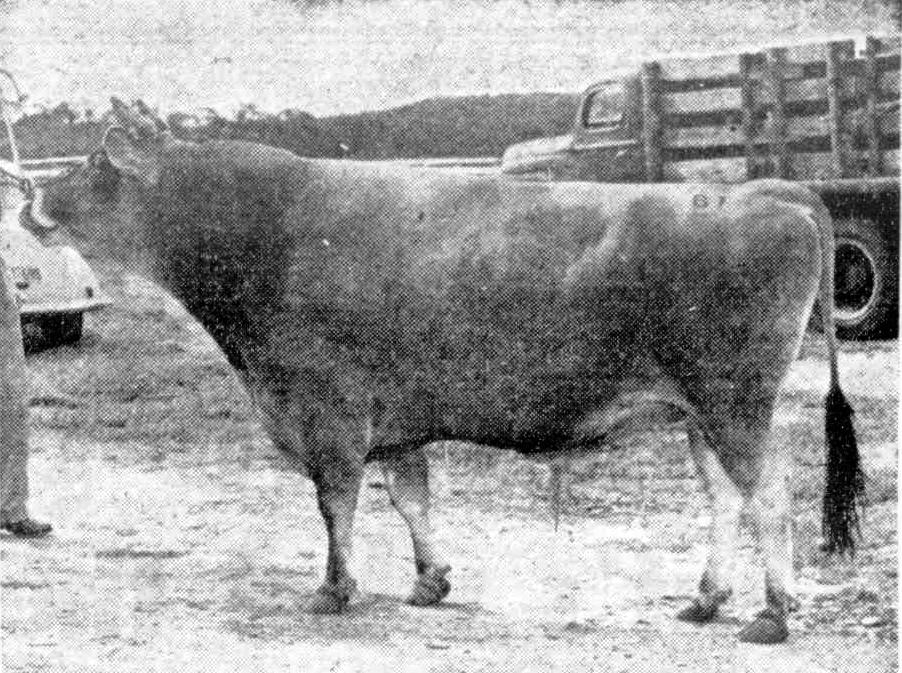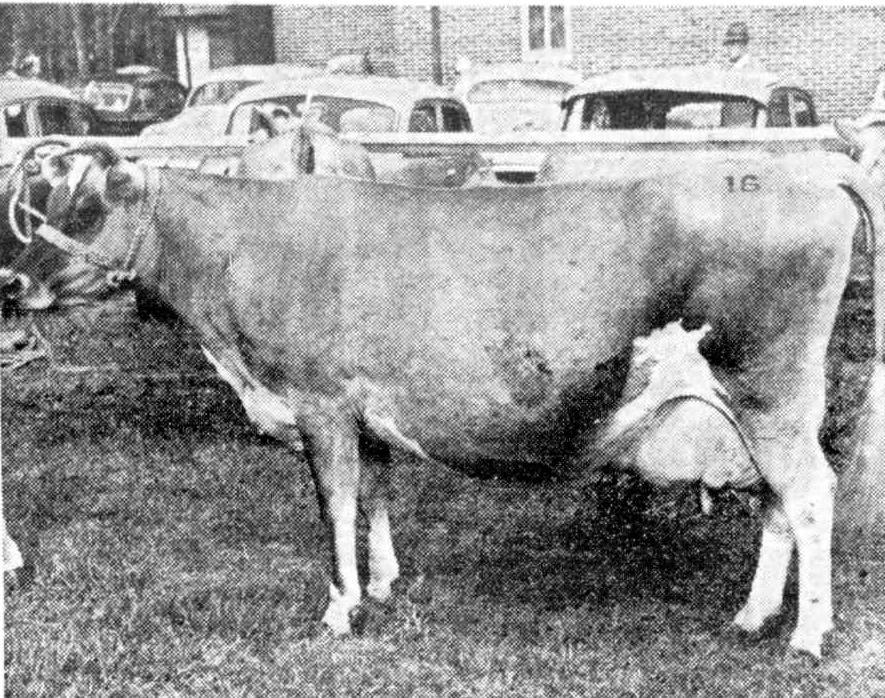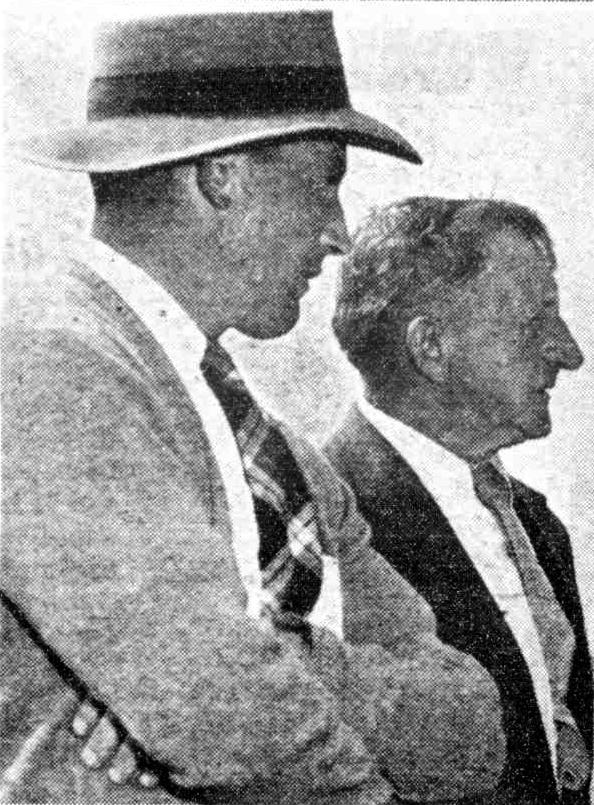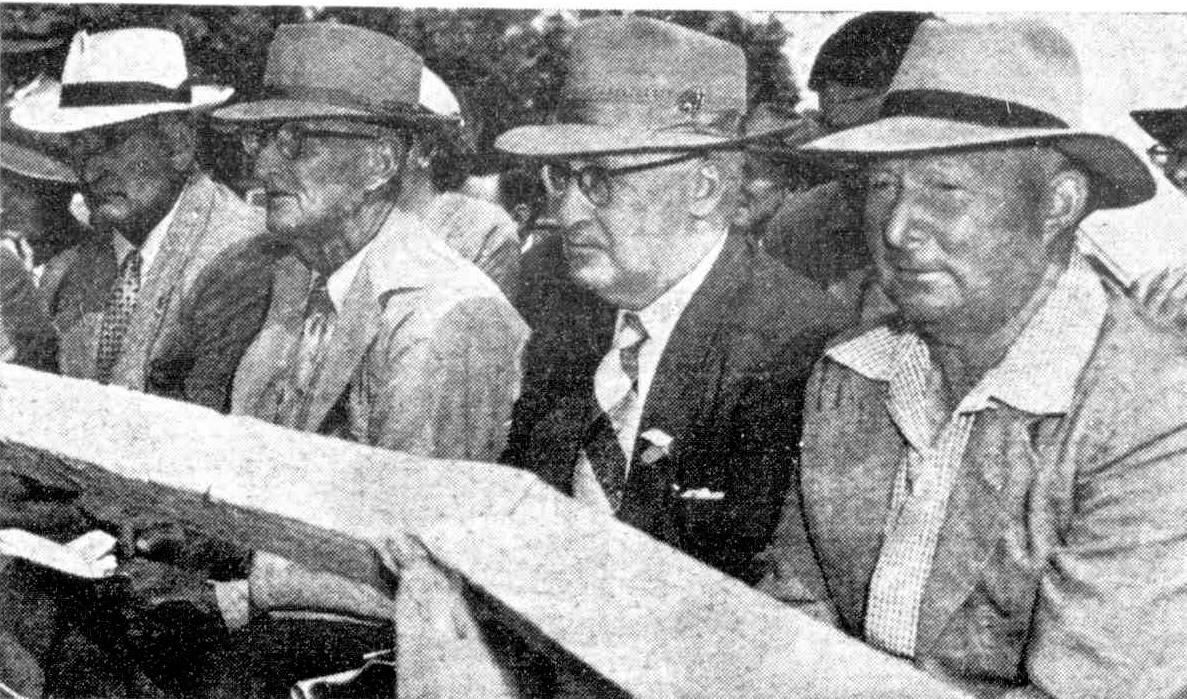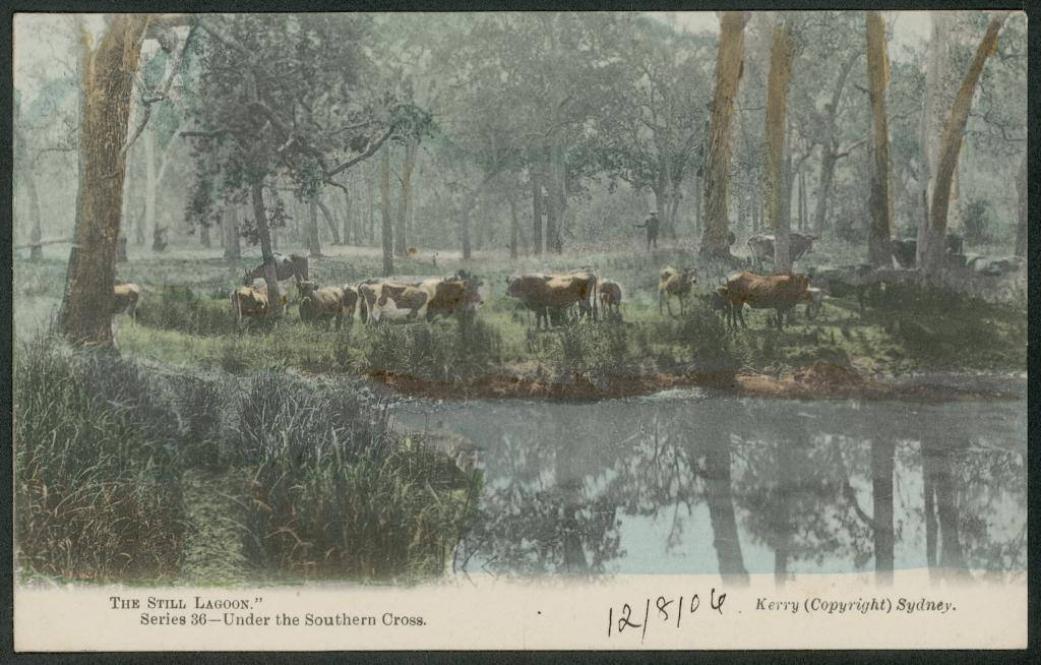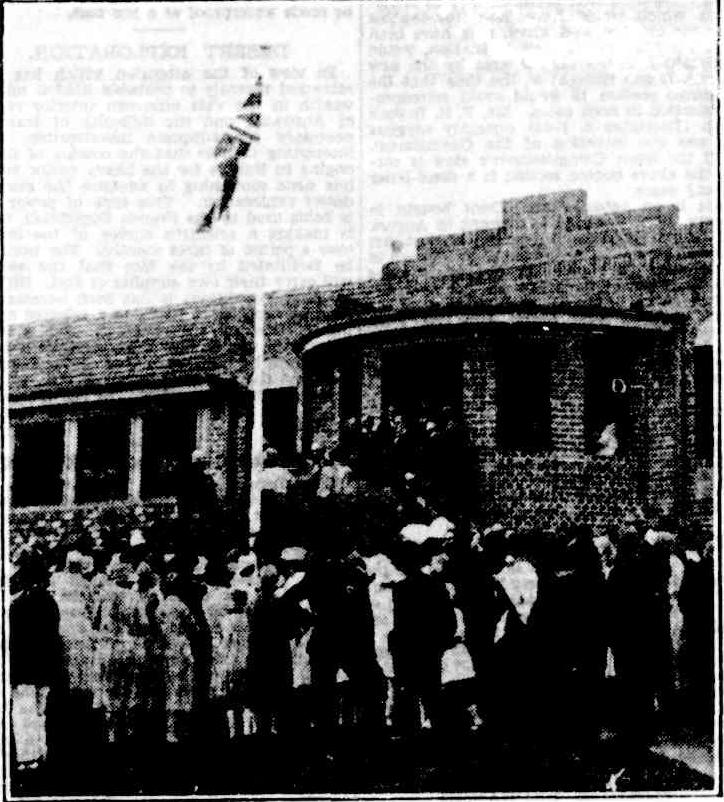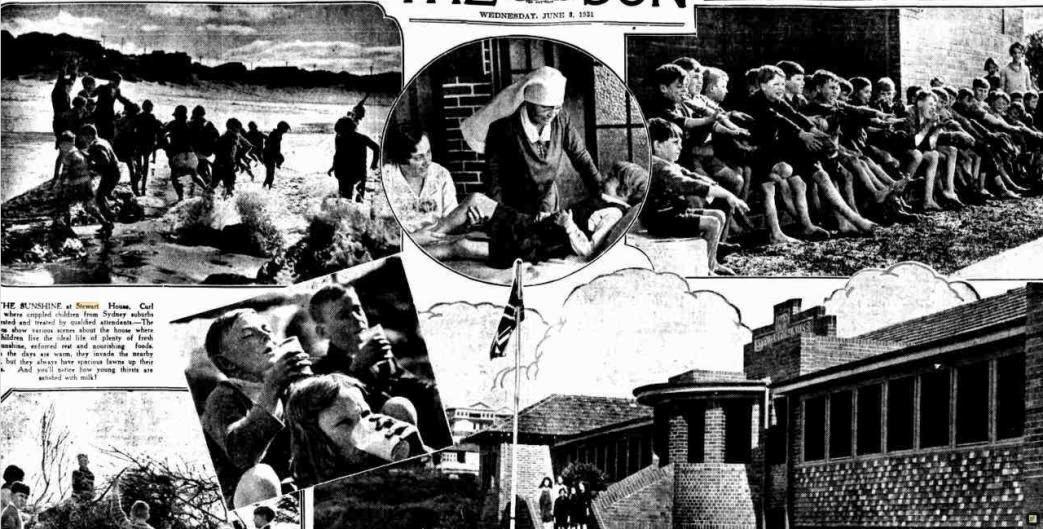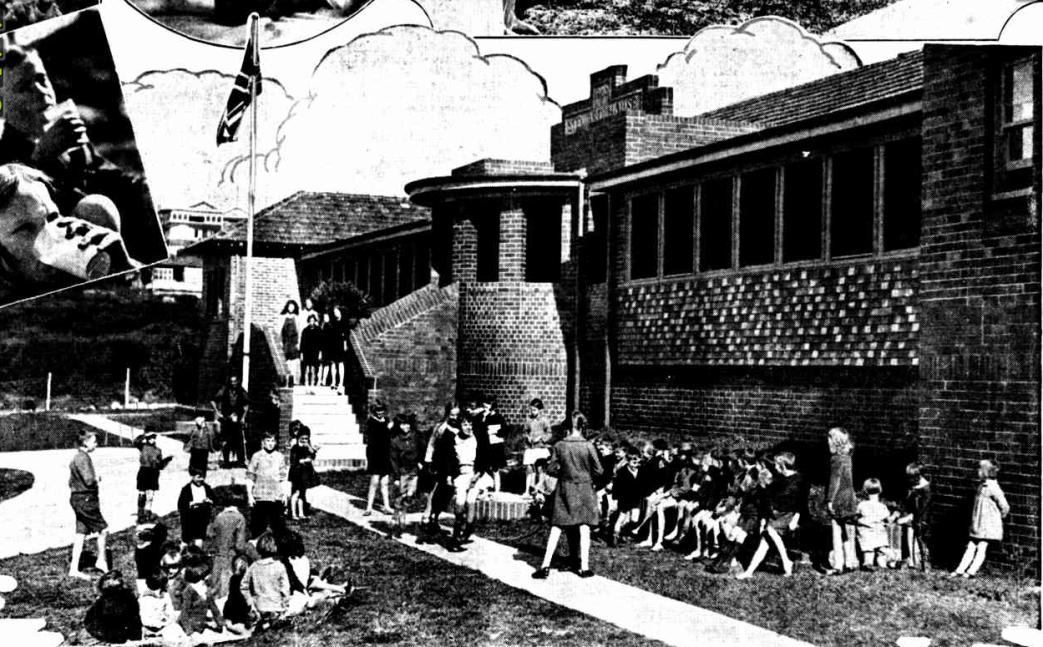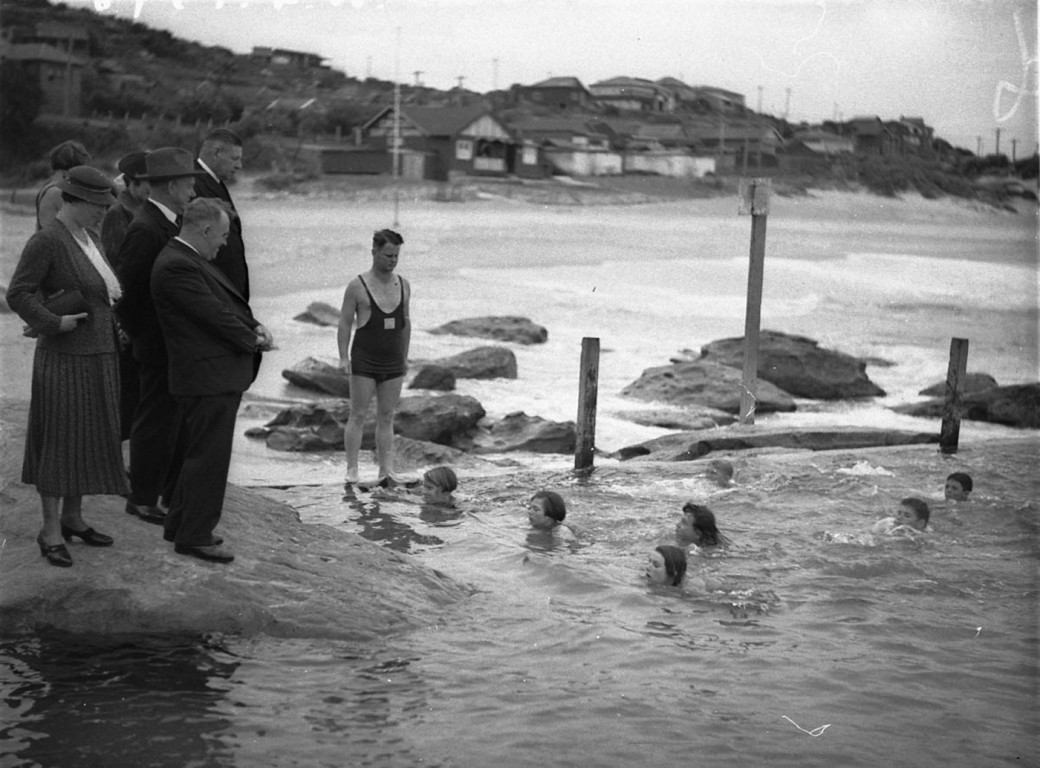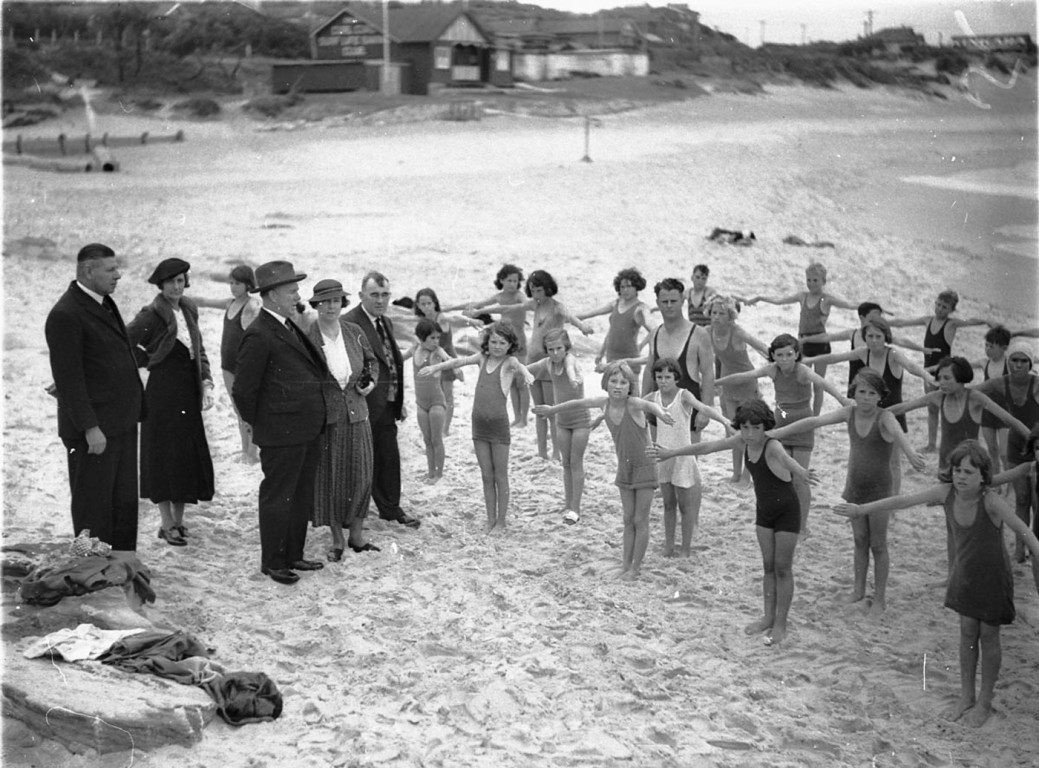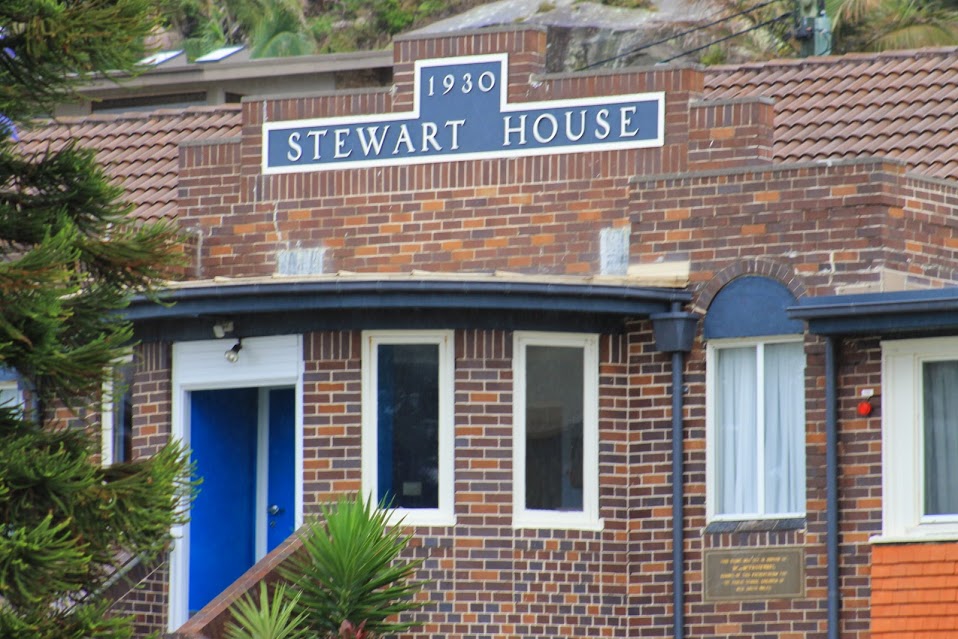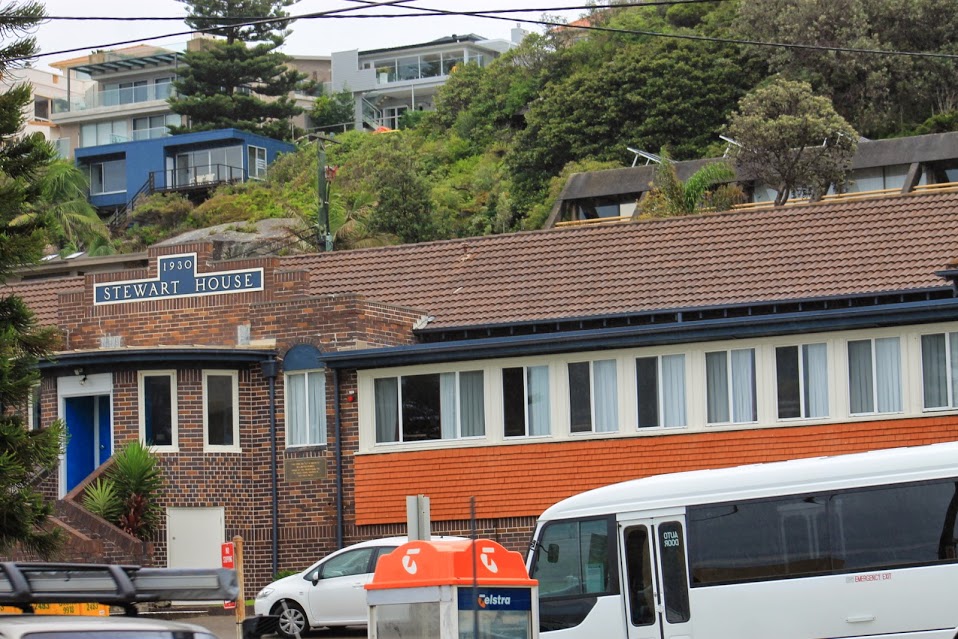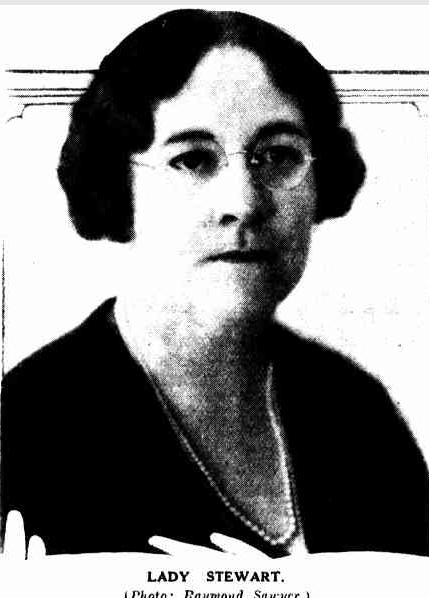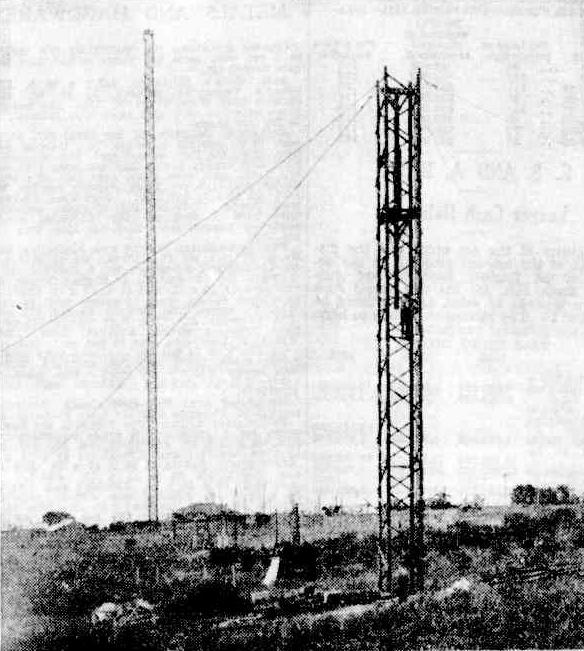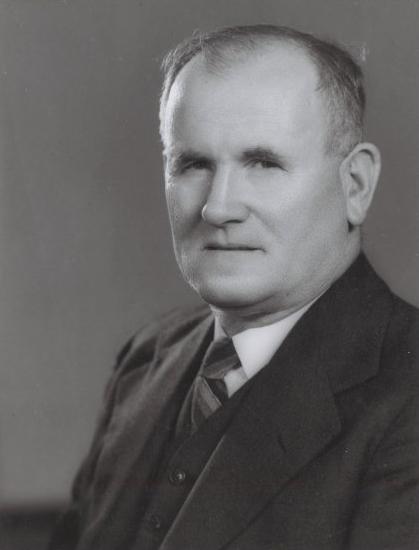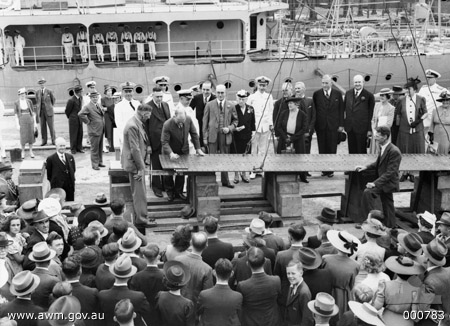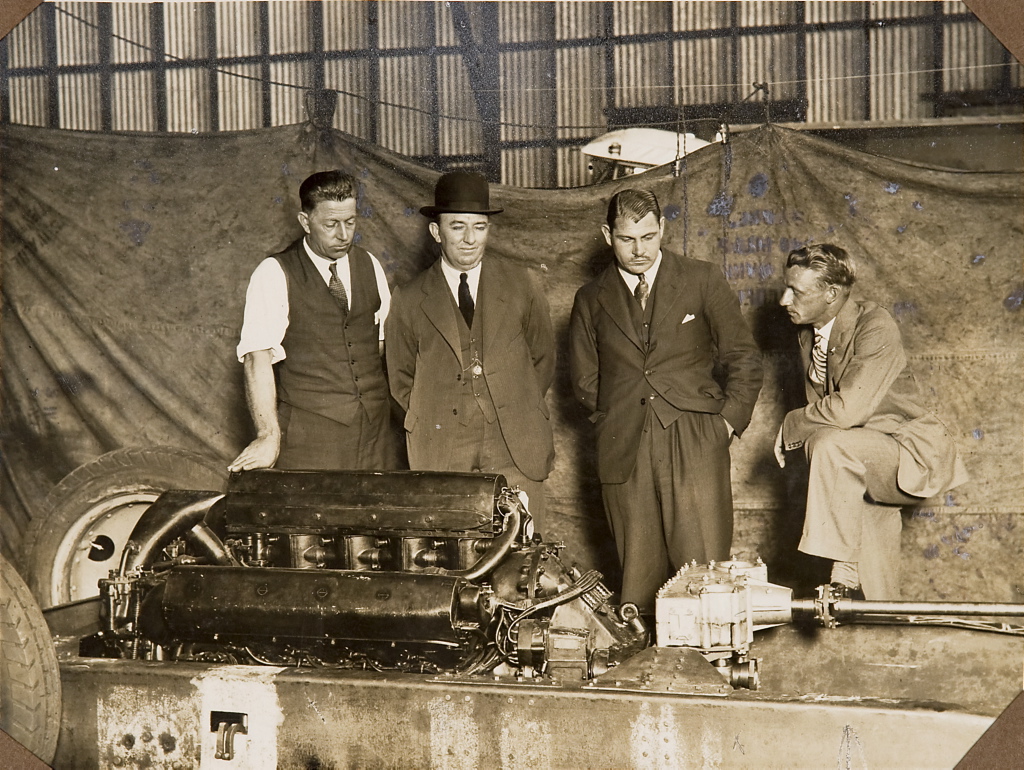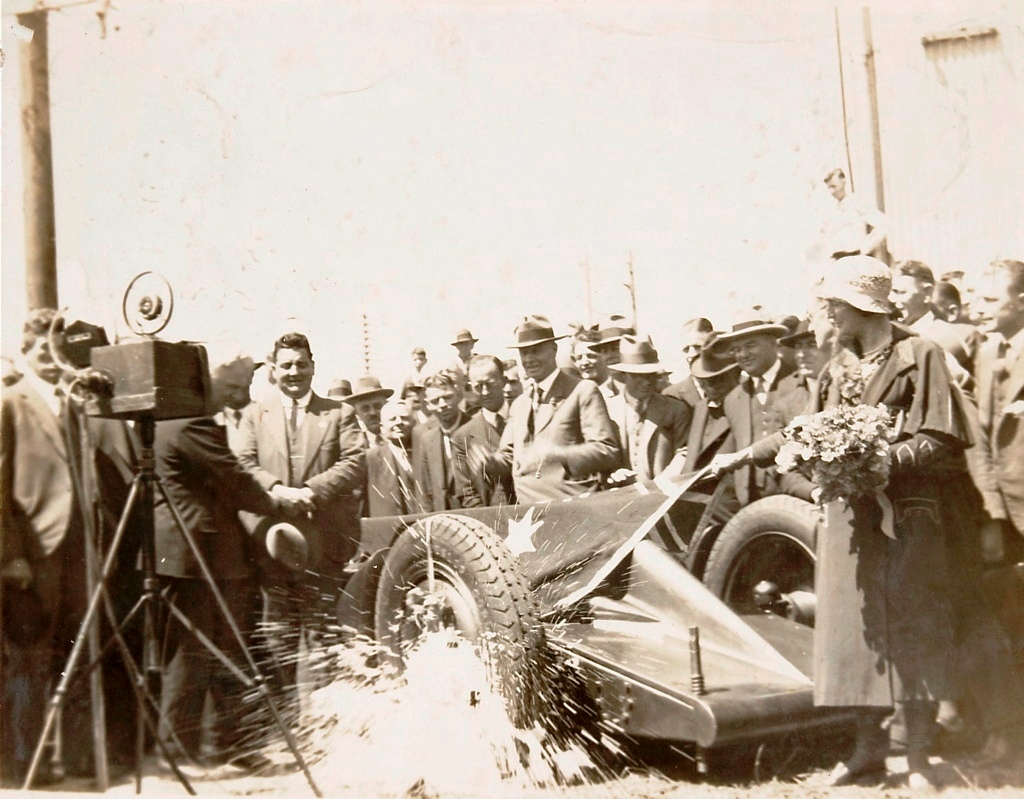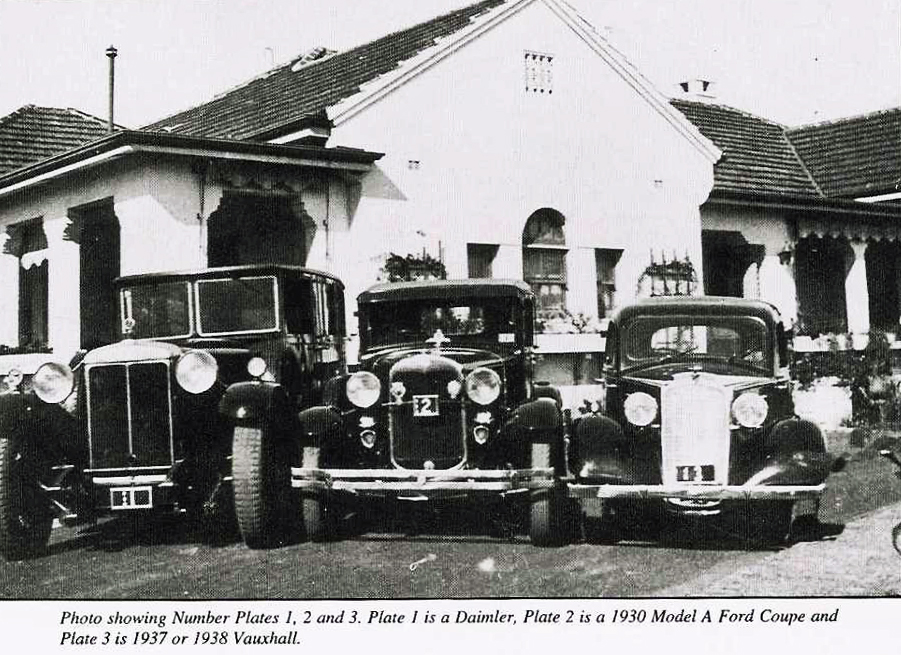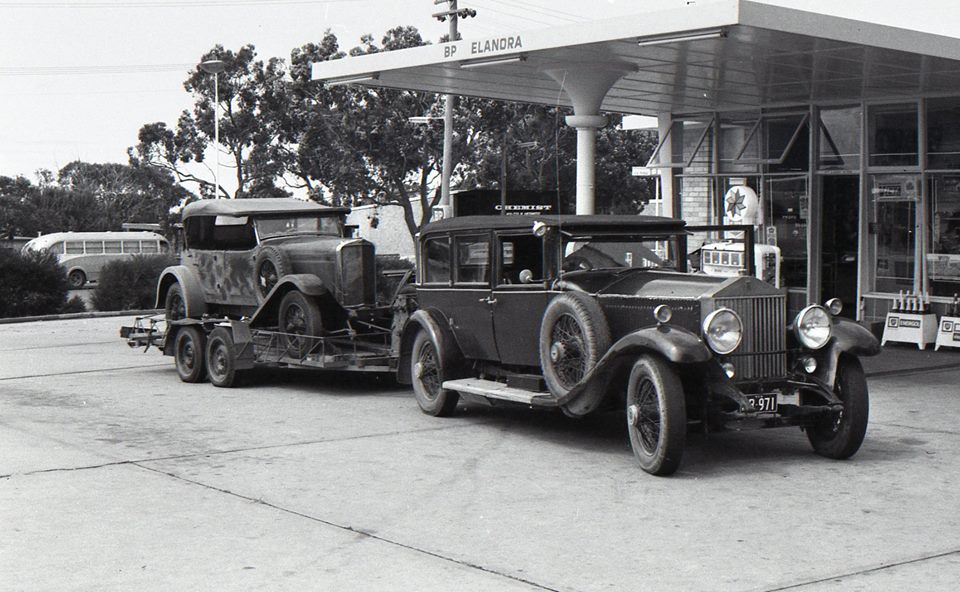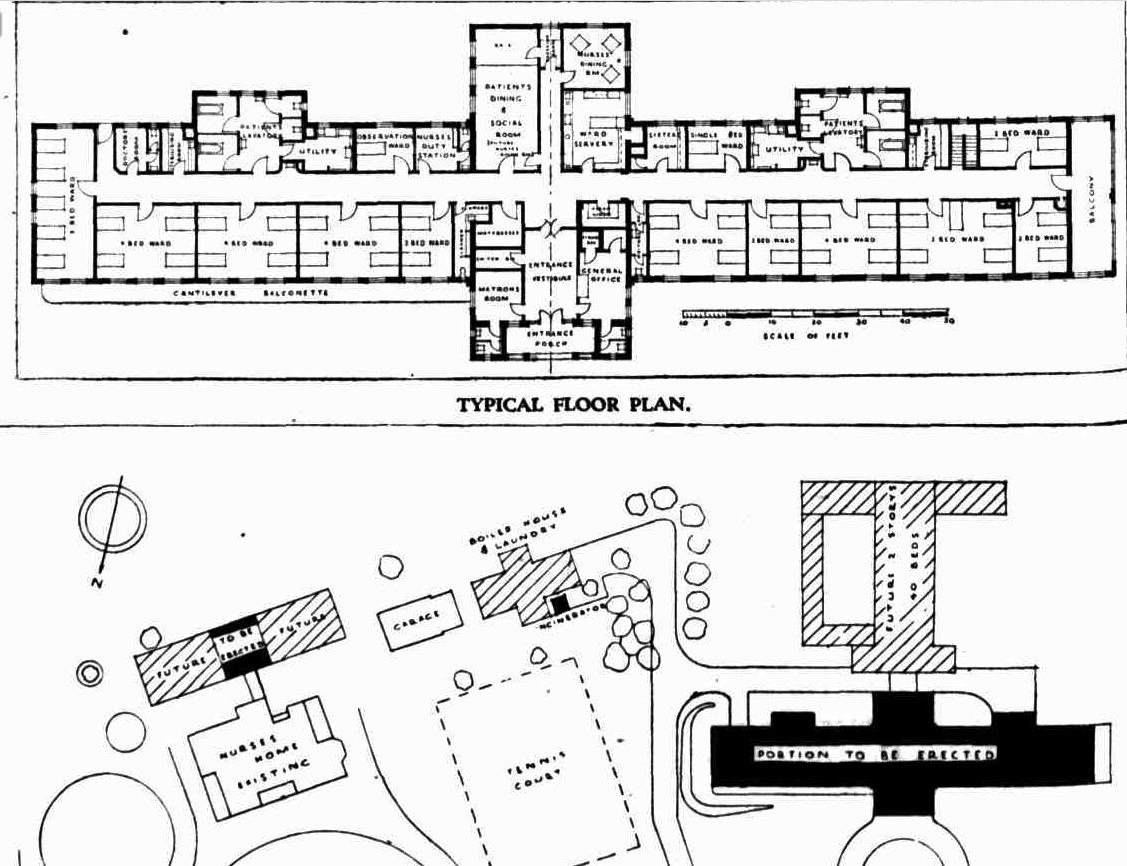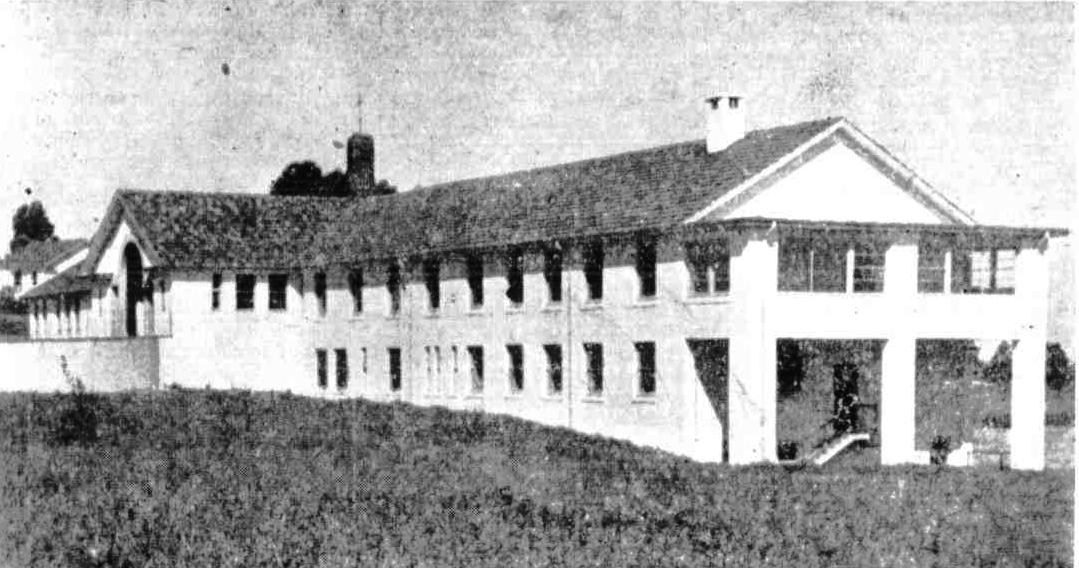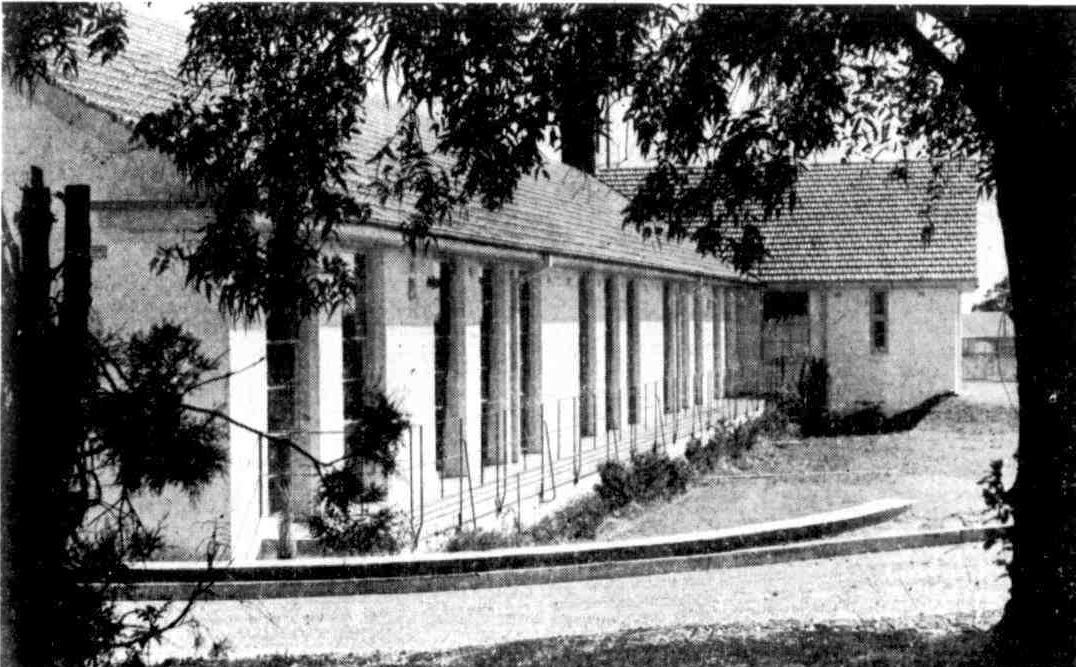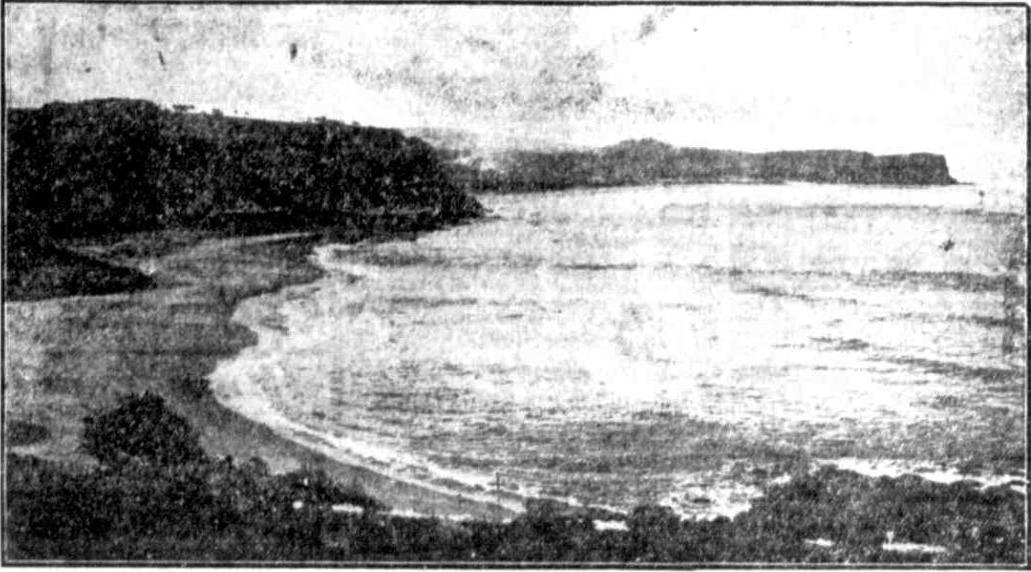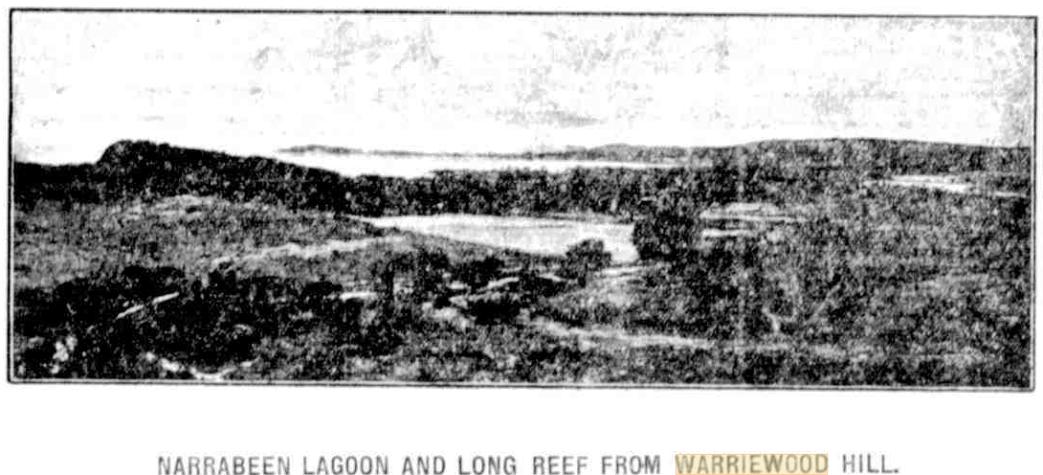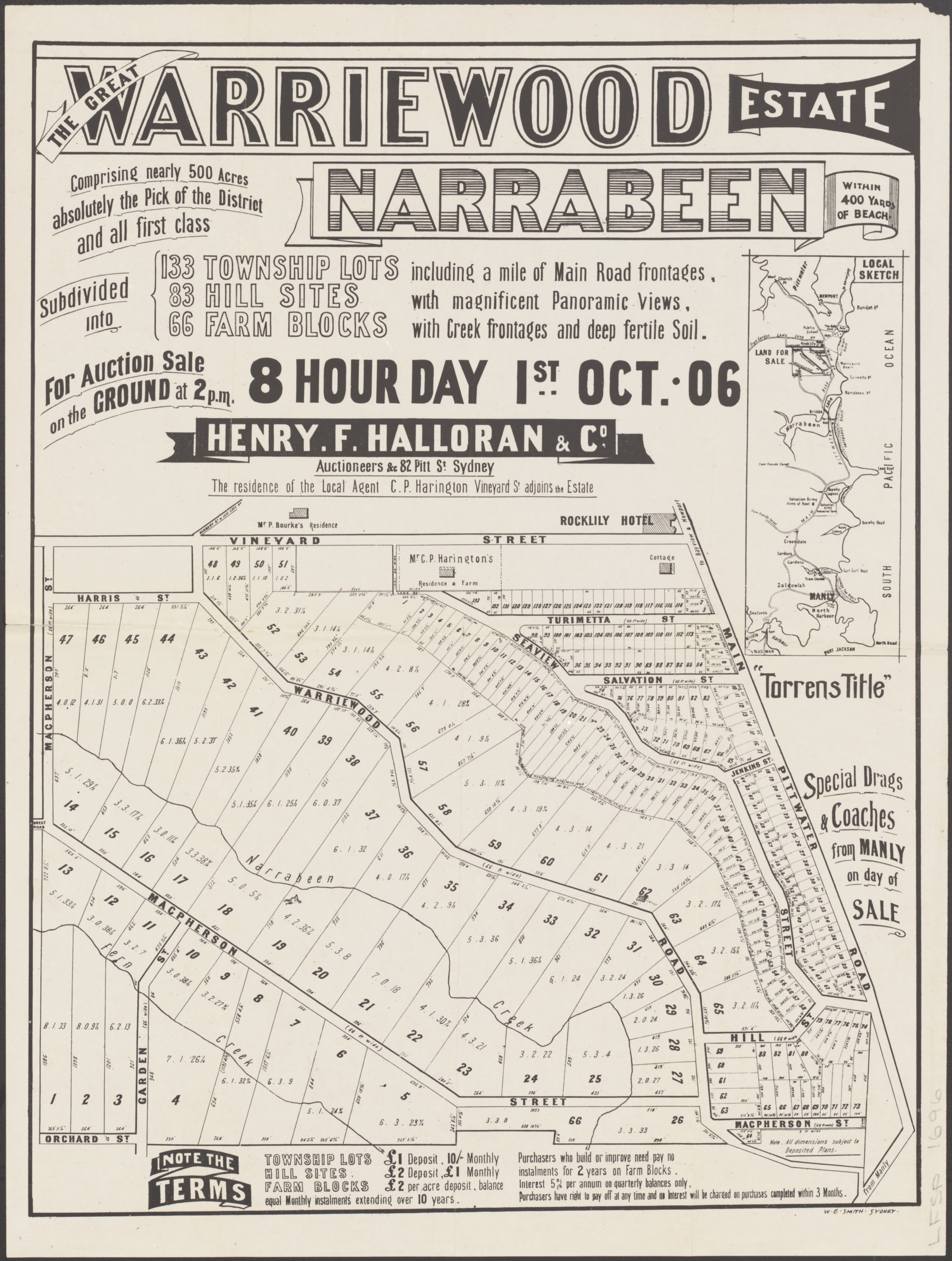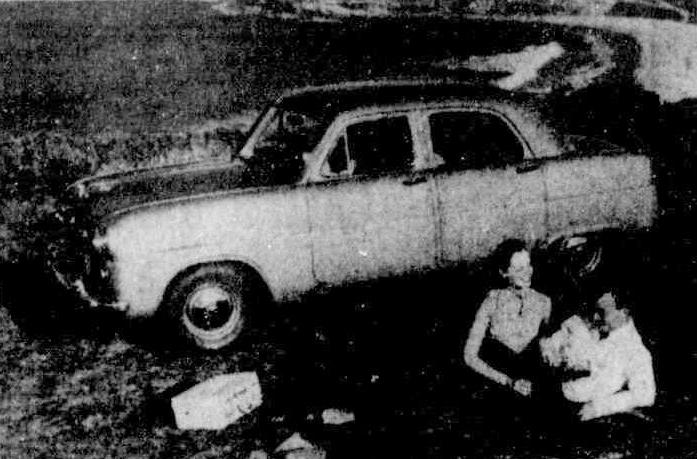References
Frederick Stewart (Australian politician). (2016, September 4). In Wikipedia, The Free Encyclopedia. Retrieved from https://en.wikipedia.org/w/index.php?title=Frederick_Stewart_(Australian_politician)&oldid=737723422
C. J. Lloyd, 'Stewart, Sir Frederick Harold (1884–1961)', Australian Dictionary of Biography, National Centre of Biography, Australian National University, http://adb.anu.edu.au/biography/stewart-sir-frederick-harold-8664/text15151, published first in hardcopy 1990
A few local dairies a bit further on from the Foley and Farrell days:
Mr. A. Skene's Brookvale dairy
A SUBURBAN DAIRY.
Farmers who expect their cows to give good milk -returns from moderate pasture alone might take a leaf from the book of a careful suburban dairyman who feeds his cattle and manages his dairy on improved principles. The other day I dropped in at Mr. A. Skene's Brook Vale dairy, which is on the Narrabeen-road three miles from Manly. This dairy supplies the greater number of milk consumers in Manly, and has a good reputation both among householders and in the records of the Government Health Department. The long milking shed holds 40 cows, and is so constructed that it can be hosed out a few minutes after milking and the interior is as sweet as an open field. The smooth, hard concrete floor is perfect, and the drainage is excellent. The floor of the stalls is raised above that of the aisle, which runs down the centre, so that the cows do not stand head to head, as in some sheds, iney are not bailed up, but in each stall there is a chaw, which is placed loosely round the cow s neck, thus giving her plenty of freedom to feed from the trough in front. Water is pumped from a well into four Urge tanks, elevated so as to give good pressure for hoseing, and the engine which raises it also drives the corn-crusher and chaff cutter. Steam pipes are available, and the cans are cleansed by this best of all factors m ensuing a pure milk. The mere mention of the hour at which milking begins makes me yawn and suggests getting up in the middle of the night to catch an outback train. The milkers begin at 3.30 a.m. for the morning delivery in Manly. For the afternoon delivery the cows are taken in hand at 12.30, aud they are put through very rapidly, there being plenty of hands. Afterwards, in a very neat clean can loom, the milk is divided off into the large cans we see in the delivery carts, and the drivers after changing their clothes, drive off to the town. Everything goes like clockwork, and it is a lesson in management to watch a day's operations at the Brook Vale dairy.
THE FEEDING SYSTEM.
The great point m feeding is to get the maximum supply of milk of good quality out of the cows without overdoing rations, and putting the susceptible organisation of the animals out of order. It is, of course, possible to feed very highly and make the business pay, because the price for milk is very much better than farmers receive from factories. Still, the suburban dairyman does not hold such an immense advantage over the factory suppliers as at first appears. There are the cost of delivery, the collecting, the bookkeeping, and the varying percentage of bad debts to be reckoned with. Mr. Skene feeds on maize and lucerne hay, or crushed wheat and oats and lucerne hay, with green fodder crops. The lucerne hay is chaffed, and all the feed is pulped by mixing it and putting it into a boiler Into which steam pipes are brought. The process is thus rapid and labour saving, and the cows got the food in excellent milk- producing form. The green crops are raised on the place, and it is astonishing that a few acres can be made to produce the large quantities of fodder that are required. Maize, followed by sorghum or oats, is the usual rotation, and all the crops are sown in steps— that is to say, half -acre strips are put in at various dates, so that there is always anew lot coming on for food. The 'farm' is 12 acres in extent, and part of it is not yet broken up. The land has been reclaimed by drainage and is fairly rich, but not strong enough to meet the demands upon it without liberal applications of manure. Liquid cow droppings and washings from the sheds are used where the land is feeble, and bone dust comes in to help out the stable and yard manure. Mr. Skene recognises the important fact that a deep milker costs no more to keep than a light-yielding cow, and he is making up his herd by purchasing the best he can get, giving up to £14 per head in some cases. The crack cow of the dairy cost something twice this figure. She is almost pure Hereford, and her yield has been 14 quarts per day for five months, giving something like £26 worth of milk. A number of breeds are represented in this herd, as in all other milking herds, and they all yield well, the value of sound feeding being very apparent. DAIRY. (
1899, October 21).
The Sydney Mail and New South Wales Advertiser (NSW : 1871 - 1912), p. 966. Retrieved from
http://nla.gov.au/nla.news-article163702692 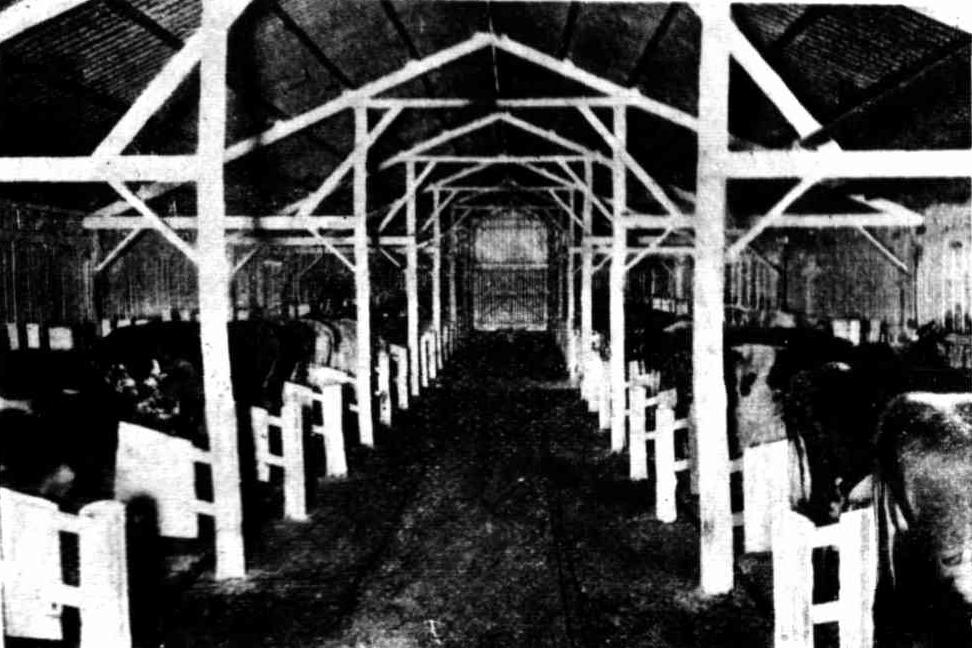
Skene's shed:
A PRACTICAL MILKING AND FEEDING SHED. A Practical Milking and Feeding Shed. (
1901, March 23).
The Sydney Mail and New South Wales Advertiser (NSW : 1871 - 1912), p. 720. Retrieved from
http://nla.gov.au/nla.news-article165294328
CURL CURL DAIRY.
This is the property of Mr. Alexander Ralston, a worthy Scotsman, and is situated on a creek of the same name, about 2½ miles from Manly on a sweeping bend of the road to Narrabeen. The farm com- prises 17 acres, 10 of which are under maize, sorghum and oats. It is a well sheltered spot, and is comparatively immune from the fierce, westerly gales. As a dairy it is unique in the experience of your correspondent, as its cows, of which there are 60, are hand-fed, are milked re-gularly all the year round, and are regaled, head to head, from two rows of bails. The cows are simply in splendid condition, and compare favourably with those which are nourished only on the native grasses. They are milked twice a day, and twice a day the sweet, fresh milk from them is carted into Manly and duly delivered to customers. A shed 80ft. by 24ft. and 12ft. high, is used for storing the fodder. There is an engine for chaff-cutting and other matters, and the water required, for general purposes, is pumped up by a windmill from Curl Curl Creek through a quarter of a mile of piping. The home at the dairy is spacious and lofty, and, as befits a dairy, is kept scrupulously clean. A genuine scotch hospitality is dispensed here. Adjoining the Curl Curl dairy is what is known as Fernholme egg farm, a model of enterprise conducted by Mr. T. A. Hutchinson, of which more anon. CURL CURL DAIRY. (1906, May 18). Albury Banner and Wodonga Express (NSW : 1896 - 1938), p. 15. Retrieved from http://nla.gov.au/nla.news-article100677849
MILK PROSECUTIONS. ALLEGED ADULTERATION. SALVATION ARMY DAIRY MANAGER FINED.
Several dairymen In the Pittwater district were prosecuted by Inspector Kench, of the Board of Health, at the Manly Police Court, for alleged adulteration of milk. Considerable Interest was taken In the proceedings owing to the fact that the Manly Council, had decided not to prosecute after hearing the explanation of a number of the dairy-men affected. The Board of Health, however, decided to bring the charges Into court.
John Brimblecombe, of Brookvale, was charged with selling milk with a deficiency of fat on December 21. The evidence tendered by the council's Inspector (Mr. I. S. Crakanthorp) was to the effect that the herd kept by Brimblecombe was a good one, but there was a deficiency of butter-fat In the milk taken from them. This was a case in which the council would not prosecute.
Mr. Keach said that the council had no power to veto. Mr. Crakanthorp was their officer.
Mr. Love: I prefer not to know what took place at the council. It doesn't affect me.
In defence, Brimblecombe stated that he had bought his herd at top price, and he used the best fodder. He had been fined on two previous occasions. Mr. Love, S.M., inflicted a fine of £1 14s, with 6s costs.
Charles Hayman, manager of the Salvation Army Dairy Farm at Deewhy, had three charges against him for deficiency in milk-fat. Defendant said that the farm was run for the purpose of maintaining indigent people, and had supplied milk for seven or eight years. It had always been excellent, and he had got 1d per quart extra for It. He strongly objected to the charge being laid down as food adulteration.
Mr. Love: It is the legal term.
Mr. Hayman: It is not good English.
Mr. Love fined defendant. £5, with 6s costs, in each of the first two charges, and £3, with 6s costs, in the third.
Leslie Oxenbold was also fined £2, with 6s costs, or seven days, and John Clifford, of Mona Vale, on two charges, was fined £3 and 6s costs in each case. MILK PROSECUTIONS. (
1913, March 4).
The Sydney Morning Herald (NSW : 1842 - 1954), p. 13. Retrieved from
http://nla.gov.au/nla.news-article15402203
Greenhill Dairy, Narrabeen
WANTED, a YOUTH.- able to milk and deliver, about 16 years. Greenhill's Dairy, Narrabeen. Advertising. (1921, February 5). The Sydney Morning Herald(NSW : 1842 - 1954), p. 24. Retrieved from http://nla.gov.au/nla.news-article16887155
What were your impressions of post-war Narrabeen; what was it like?
They were all quite sparse; the housing wasn’t anywhere like what it is now. Warriewood, the headland there didn’t really exist, there were no houses there, the Salvation Army owned it all. There was two dairies in Narrabeen, in Warriewood where the square is there now, and Paul’s dairy was close to Sheep Station hill there, which was this end of the valley. I can’t remember the name of the other one but we used to get money as kids to go in and get the cows out of the scrub because they’d wander off. Instead of wasting money getting labourers to get them they’d get us to; you’ve got to remember that this after the Depression years, things were still tight. And if course there were the market gardens all the way through Warriewood Valley. As kids we used to go out there with our Billy carts, particularly during the Christmas Holidays, to get the fruit. A couple of us would go to the front door and the rest would climb over the back fence, get the fruit and vegetables, put it in our Billy carts and take it back to the camping area in Narrabeen to sell it. That was good money.
Homer Dairy - Bassett Street, Mona Vale
Koalas Found In Bush At Mona Vale
Residents of the Mona Vale district declare that if a thorough search were made of their area many koalas would be found.
On one property, Homer's dairy, Mr. J. Homer says that they are to be found in the gum trees. When a "Sun" representative visited the property to-day, one koala was quickly located on a tea-tree, but he left it, ran across the ground and then mounted a large grey gum. The koala showed smart climbing prowess and was soon as high as lie possibly could get in the tree. There, he quietly munched away at the surrounding leaves. Another resident of Mona Vale, Mr. F. Mason, who has a tropical garden, also says that koalas are in the district. He said that it was difficult to find them readily, but he and his wife had often seen them in gum trees around their home. Mr. W. Brewer who has lived in the district for more than 40 years, said that, although koalas were not as plentiful as they had been, probably because of the cutting down of trees, he believed that if a thorough search were made, many would be found. Koalas Found In Bush At Mona Vale (
1936, September 30).
The Sun (Sydney, NSW : 1910 - 1954), p. 18 (COUNTRY EDITION). Retrieved from
http://nla.gov.au/nla.news-article230019965
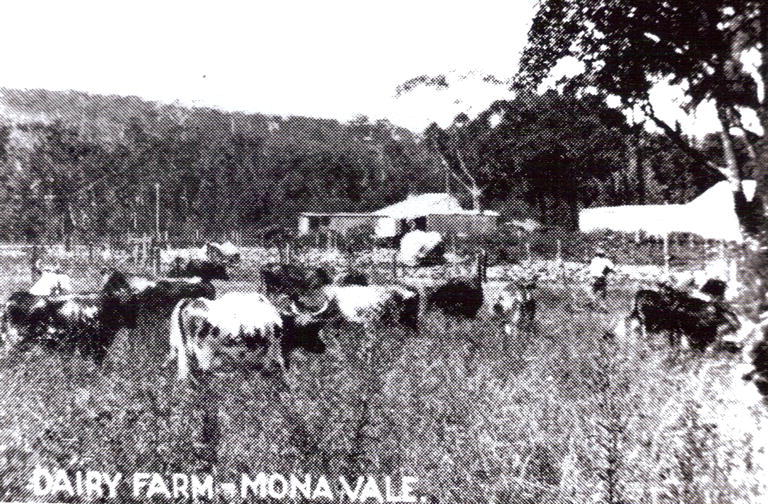
Diary farm at Mona Vale. Circa 1940. Courtesy Olwyn Johnstone, Pittwater Historical Image Library; Mona Vale Library.
MILK SAMPLE WAS DEFICIENT IN FAT
Through her husband, Gladys Homer, a dairy proprietor, of Mona Vale, pleaded guilty today in Manly Court and was fined 2s 6d with 8s costs for having sold milk which was stated to have been deficient in milk fat to the extent of 15.6 per cent. Inspector Patton said that only one of five samples taken showed any deficiency, and he had been informed that the deficient milk was bought from another company. There was no added water and the deficiency could nave come about through the milk being improperly handled or some cans having got more fat than others. If companies delivered to the dairies Instead of "dropping the milk about the streets," and the milk was stirred before being used, such difficulties might not occur. MILK SAMPLE WAS DEFICIENT IN FAT (
1939, March 2).
The Sun (Sydney, NSW : 1910 - 1954), p. 36 (LATE FINAL EXTRA). Retrieved from
http://nla.gov.au/nla.news-article231104710
FORMER MUR-BAH MAN'S DEATH FROM HEART FAILURE
Three minutes after he had been heard whistling merrily at Homer's dairy, Mona Vale, on February 8, Robert Jesse Johnson (20) collapsed at a wash basin and fell forward, dead, with his face in a few inches of water. Dr. Belli, of Mona Vale, was called by Joseph Homer, proprietor of the dairy, and Sergeant Cook, of Narrabeen, took Johnson's body to the morgue. Examination revealed that death was due to heart failure. Johnson, was a son of Mr. and Mrs. J. T. Johnson, of Ewing Street, Murwillumbah. He also is survived by three sisters and two brothers, one serving overseas with the A.I.F. Johnson was a member of the AIF and was discharged. He was at one time employed by the Tweed Butchering Coy., Murwillumbah. FORMER MUR-BAH MAN'S DEATH FROM HEART FAILURE (
1942, February 17).Tweed Daily (Murwillumbah, NSW : 1914 - 1949), p. 2. Retrieved from
http://nla.gov.au/nla.news-article194546233
Willy-willy hit's Mona Vale; roofs torn off
Roofs were torn away, a chimney knocked down and buildings damaged when a willy-willy struck Mona Vale early this afternoon .
A dairy owned by Mr. J. Homer, of Bassett Street, Mona Vale, received the full force of the wind and eight other buildings were damaged. Mr. Reg Homer, son of the owner of the dairy, said: "A strong breeze sprang up shortly after noon. Suddenly we heard a "whishing" noise and saw a cloud of dust sweeping across the paddocks. "We didn't have time to do anything. When the whirlwind hit us it tore the roof off the main section of the dairy, and hurled it against the house.
"It knocked down one of the chimneys and as that fell I saw another roof lifted from a building just as if it were a piece of paper."
Weather Bureau officials said wind in some suburbs had reached 47 mph. They did not expect it to get any worse, they added. A cool change tonight is forecast. Today's 1 pm temperature reading of 83.8 degrees was steadily climbing towards yesterday's maximum of 84.5, which was the highest reading since last April. . Despite a flat surf, surf clubs today reported biggest attendances since last summer. "Thousands Thousands flocked to Bondi and Manly to escape the heat.
Willy Willy Strikes Mona Vale
SYDNEY, Thursday. - Several buildings were badly damaged when a willy-willy struck Mona Vale to-day. One resident said: "A strong breeze sprang up shortly after noon. Suddenly we heard a whishing noise and saw a cloud of dust sweeping across the paddocks." A dairy owned by Mr. J. Homer, of Bassett-street. Mona Vale, received the full force of the wind. Eight other buildings were damaged. Willy-Willy Strikes Mona Vale (
1949, October 14).
Newcastle Morning Herald and Miners' Advocate (NSW : 1876 - 1954), p. 3. Retrieved from
http://nla.gov.au/nla.news-article134172237
DAIRY FARMERS' CO-OP. MILK CO. LTD.
50th ANNUAL REPORT.
The annual meeting of the Company was held on Friday last. The report discloses: — The total quantity of milk handled was forty-one and one-half million gallons, exceeding the quantity handled in the previous year by approximately two million gallons. Following the removal of the ban on the sale of sweet cream greatly increased quantities of milk will be required. The turnover for the whole of the Society's operations was £6,090,000. The profits, after providing for depreciation and Taxation totals £22,992, a dividend of 5 per cent, will be made. The disastrous floods during June in the Hunter River district and in the North Coast River districts necessitated the imposition of a rationing of supplies to consumers more severe than ever before. The Directors offer their sympathy to those suppliers who suffered loss due to the floods. Machinery, plant and equipment continue in good order and condition. The construction of the new Western Suburbs unit is progressing despite the shortage of labour and materials, and the completed 'work-shop buildings are now being used by the Society.
The construction of the new Willoughby depot is progressing and it is intended to build a new depot at Manly. It is also intended to build a new depot at Canberra and to introduce a pasteurised bottled milk service in the capital city. The freehold of the Mosman depot premises has now been acquired. Following the purchase of a dairyman vendor's business at Mona Vale a new branch has been established in that district. During the year your Society acquired the business and property of the Taralga Co-operative Dairy Company Limited, Goulburn, and the Bathurst Dairy Company Limited, Bathurst. The factory suppliers are now shareholders in your Company and are voluntarily contributing for additional shares. Both of these acquisitions in these important and rapidly-growing centres will further consolidate the distribution of milk by co-operative enterprise. Increased costs generally in milk handling and distribution were again evident and were recognised in the Milk Board Prices Declarations operating from the 7th October, 1949, and the 24th March, 1950, and also by the State Prices Commissioner in respect of prices in areas outside the Milk Zone. This is the fiftieth year of your Society's operations and your Directors are issuing a commemorative booklet dealing with the history, achievements and plans for the future of your Society. .. Appreciation is again expressed to milk producers and country factory managements for their support during the year. The service of the many loyal employees of the Society is also appreciated. There are now 5,953 members in your Society. Following the alteration of Rule 94 by which the minimum number of Directors was increased, the vacancy created was filled by the appointment of Director A. R. Keith. . Directors, Messrs. A. G. Martin, E. H. K. Downes, J. S. Haddin, R. J. Alison, and A. R. Keith, retire but are eligible for re-election. DAIRY FARMERS' CO-OP. MILK CO. LTD. (
1950, October 5).
Camden News (NSW : 1895 - 1954), p. 4. Retrieved from
http://nla.gov.au/nla.news-article143972258
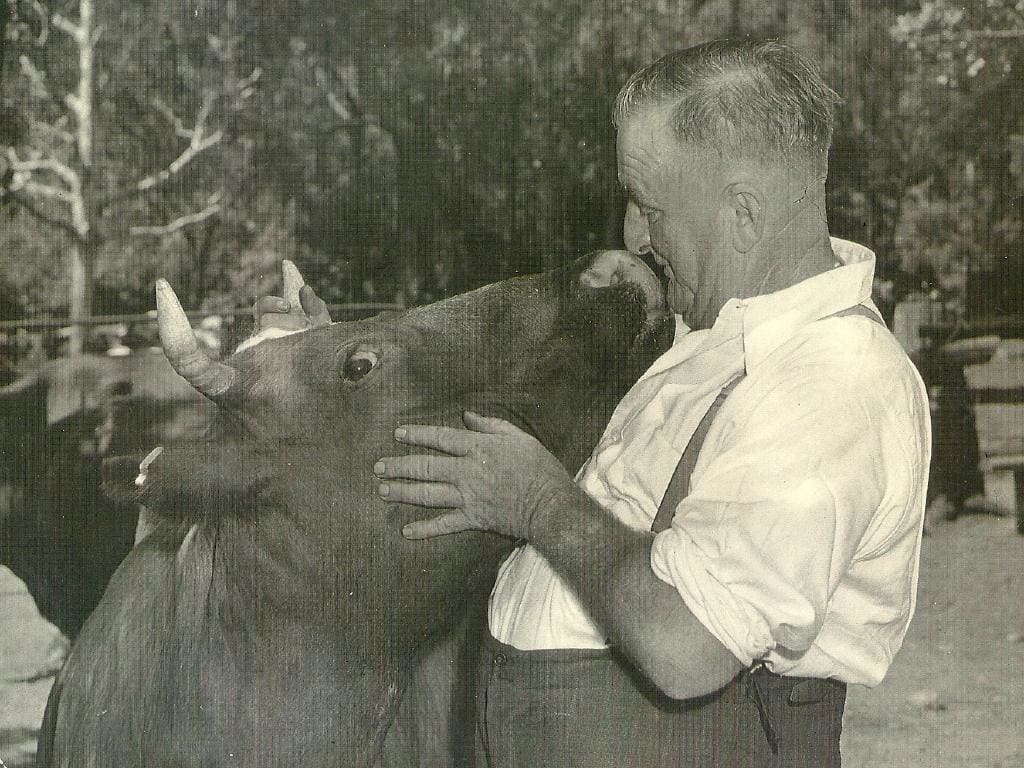
Joseph James Homer kissing Annabela goodbye when he sold his dairy at Mona Vale in 1950. Supplied by Kevin Hawkins
Mona Vale milk ban is withdrawn
The Milk and Ice Carters' Union late today withdrew its ban on milk supplies to Mona Vale vendor J. Homer.
Justice de Baun announced this following a compulsory conference of the parties in the Industrial Commission. He said Mr. Homer's customers would be supplied with milk from tomorrow morning. A conference of all interested parties, including Dairy Farmers Ltd., and Fresh Food and Ice Co., would be held at 2.15 pm next Thursday. Justice de Baun added it appeared the dispute was a little wider than the issue in regard to Mr. Homer. The management committee of the union yesterday imposed the ban because it claimed Mr. Homer had been "filching" customers from other vendors.
3 am -.visit
600 families were left without milk today, when, acting under union instructions, carters stopped supplies to Joseph Homer. Milk and Ice Carters' Union secretary A. W. Thompson and organiser W. Jackson went to Fresh Food and Ice Co's., Manly depot at 3 am today and ordered union members not to handle milk for Homer. The union officials told the company if milk was made available for Homer, the union's action would he extended to the whole of the North Shore.
Vendor's stand
Mr. Thompson said later, "We do not want the dispute to extend, but Homer will get no milk until he employs union labor, or the matter is settled by Health Minister O'Sullivan." Fresh Fresh Food and Ice Co.'s-general manager J. Agnew said company employees generally had been directed by the union not to handle milk for Homer.
Homer, of Newport Rd., said, "My wife, sister and I run the business and employ nobody. I can't see where the non-union labor nonsense comes in. They say I have broken union zoning regulations, but the Milk Board does not recognise zoning and says it is illegal.” Mona Vale milk ban is withdrawn (
1951, May 4).
The Sun (Sydney, NSW : 1910 - 1954), p. 1 (LATE FINAL EXTRA). Retrieved from
http://nla.gov.au/nla.news-article230758723
Milkman's Ordeal
Leslie Kuhlmorgan,
50, milk carter, of Park Street, Mona Vale, lay for an hour in Forest Road, Warriewood, yesterday, with his left leg broken in two places. His horse kicked him when the cart overturned after striking a rut. Another milk carter found Kuhlmorgan at 5 a.m. Manly District Ambulance took him to Manly Hospital. Milkman's Ordeal (
1951, July 13).
The Sydney Morning Herald (NSW : 1842 - 1954), p. 5. Retrieved from
http://nla.gov.au/nla.news-article18211226
MILK FOR SCHOOLCHILDREN. Members of the Wagga Rotary Club are organising a movement to supply children under two years of age with fresh milk daily. It is proposed to extend the movement to embrace all children in the schools. MILK FOR SCHOOLCHILDREN. (
1931, May 12).
Newcastle Morning Herald and Miners' Advocate (NSW : 1876 - 1954) , p. 4. Retrieved from
http://nla.gov.au/nla.news-article139634023
FREE MILK FOR CHILDREN
Big Federal Scheme
About one million school children throughout Australia will receive free milk under a scheme announced yesterday by the Minister for Health, Sir Earle Page. The distribution will be the first step in the Minister's national health scheme. An additional seven million gallons of milk yearly will be absorbed in the scheme.
Sir Earle said the Commonwealth would meet the entire cost of the scheme, estimated at about £1,500,000 annually. The States would handle distribution, and the scheme would start in each state as soon as distributing machinery was arranged and supplies were available.
A conference of State Ministers for Health and Education, and the Federal Ministers for Commerce and Agriculture and Health will be held soon to develop plans. The distribution will be made to children at creches and nur-sery schools, kindergartens, and private and public schools. The maximum to each child will be half a pint a day. Children over 12 may be included where it is deemed expedient for administration.
1 p.c. OF PRODUCTION
Sir Earle pointed out that milk production in Australia varied between 1,000 and 1,300 million gallons a year, and the amount required for the scheme would be less than one per cent. Schemes of milk distribution for school children to-day vary in the different States.
In New South Wales a scheme has been operating through the Education Department since 1941. Under it, 155,000 pupils of about 400,000 children under 12 receive milk. In Victoria more than 66,000 pupils receive free milk. In other States there are no organised Government schemes, although various voluntary bodies make a considerable distribution. Their funds raised by voluntary effort, are supplemented by the State Governments.
Sir Earle Page said the Commonwealth Health Scheme as a whole, will cost £54,000,000 a year. Of this amount £50,000,000 will be required for medical insurance subsidies, £2,500,000 for drugs and medicines, and £1,500,000 for free milk.
Sir Earle said there was no justification for statements that to secure life-saving drugs, made free by the Government, it was necessary to belong to a friendly society.
The Minister who was commenting on a statement by Mr. A. E. Connolly, State secretary of the Pharmaceutical Guild of Aus-tralia in yesterday's "Herald," also said there was no justification for the statement that the administration of payment for the drugs would be in the hands of friendly societies. Sir Earle said that, since last January, the Federal executive of the Pharmaceutical Guild had been told, verbally and in writing, that these drugs would be available on the same free terms to every citizen of the Common-wealth who was ill and presented a doctor's prescription, whether he belonged to a voluntary organisation or not. The Federal executive had also been told very plainly that payment would be direct from the Government to the chemist with-out any intermediary.
The secretary of the Milk Zone Dairymen's Council, Mr. L. C. Turton, said it was difficult to understand the timing of the free milk scheme in a season of lowest production. New South Wales was already ahead of all the other States in this respect.
This increased demand for milk would provide problems for the Milk Board and its suppliers. Production would have to be increased by some means, said Mr. Turton, especially in the winter months. Normal liquid milk requirements in Sydney were now more than 25,000 gallons a week greater than at this time last year. In addition, if the demand for sweet cream was to be met, another 150,000 gallons a week would be necessary.
The population was steadily increasing, and the majority of New Australians were heavy milk consumers. Yet the dairying industry was still declining, mainly because the life was very hard and it was much easier to make a living in industrial work, with its 40-hour week and general amenities.
A "BLESSING"
Secretary of the Primary Producers' Union, Mr. L. J. Johnstone, said official recognition of the value of milk as a builder of health and stamina in school-children would be a blessing to the dairying industry. It had come at a time when the industry was facing changing conditions, and would have the effect, for the time being, of withdrawing considerable quantities of milk from the butter, cheese, and other processing factories.
If all Australian needs were to be supplied, there would have to be increased production of milk, Mr. Johnstone said. Otherwise the time was not far off when Australia would have few dairy products for export to Britain or any other country. FREE MILK FOR CHILDREN (1950, July 1). The Sydney Morning Herald (NSW : 1842 - 1954), p. 7. Retrieved from http://nla.gov.au/nla.news-article27573315
The KNIGHT of DUNDAS
SEVENTEEN WHIRLWIND YEARS IN THE CAREER of SIR FREDERICK STEWART
The remarkable story of the rise of F. H. Stewart from railway boy at Newcastle to Federal Minister and knighthood.
SEVENTEEN whirlwind years! . . . But they do not take us back to the beginning of the story.
A sturdy little fellow walked briskly into the railway offices at Newcastle thirty-five years ago. His bright blue eyes radiated self-confidence.
"I've come about this job," he said, showing some papers.
"H'm," said the official, glancing at them: . . . "Ah — um — F. H. Stewart?"
"Yes, sir."
"You're not very big; but size isn't everything."
"No, sir; Nelson, Napoleon — they weren't very. . ."
"Nelson and Napoleon never travelled by an up express, sonny. Besides, we're not looking for heroes. How are you on twice-one-are-two?''
"Pretty good, sir, I think."
"Anyway, you've got the job. How old are you?"
"Sixteen, sir."
"Born — where?"
"Here at Newcastle, August 14, 1884."
"Well, there's plenty of time for you to become Chief Commissioner. Here" (to an elderly clerk), "take this little Napoleon along to his job. . . Hop along. Freddy."
Freddy hopped, and soon afterwards hopped to Wellington in the west, and is hopping just now with world figures at Geneva — but that's a long way ahead. It was inevitable that he should be with the rail-ways. Transport was in his blood. He was a short, muscular, cheery, robust boy — a stocky fellow with laughing eyes — when he settled down to his first job. This was in the year 1900. But our "little Napoleon" wasn't long in the north. As already indicated, Wellington got him. Of course!
ACCORDING to one who recalls him in his boyhood, there was no nonsense about "F.H." — as he is still called, even by his grown-up sons, he had boundless energy and enthusiasm, and good judgment. There are some brains that, reach their objective by a brilliance that is accompanied by equally obvious nervous strain. He was able to get to the same end by common sense that took no toll of his strength. He was so transparently honest that a churlish or nasty remark did not wound him. They say that when he should have been hurt he looked a little surprised — that was all. His mistakes were minor ones, and his motives survived any challenge when he side-slipped. He made friends in the service because of his free and easy manliness. He worked with a laugh, but didn't stop work while he was laughing. Don't imagine he was the boss's little saint, hurrying along the passages with a sheaf of meaningless papers in his hand while the boss was about. Nor did he have a moral uplift book, "How to Get On," or something of that kind, cunningly fixed in his coat-pocket so that the boss could see the title. He did not think on those lines. He worked like a beaver because he was built that way. Most of us say at 50, "I wish I had my time over again." That is because we have learnt by pain and loss that life consists largely of mirage after mirage, each one melting away just as we are thinking we are about to step on to the yellow sands, "between the sun and moon upon the shore," of Lotus Land. Not so with Stewart. He has "missed the bus" at times, but has no regrets, even for a fortune that later on went astray (he could afford it, as it happened). IN Newcastle he had met Miss Lottie Glover, and he married her in that city. When he was transferred from Wellington to Sydney he came into contact with Mr. Thow, chief mechanical engineer — Mr. Thow, tall, dignified, "one of the old school," who afterwards grew roses at Warrawee, on the North Shore Line. Then the keen mind of Stewart led his chief to appoint him as a kind of arbitration officer, and this brought him to the elbow of the railways solicitor. His grounding in wages disputes was of value to him in after years.
A "pocket Hercules" cannot take orders from other people indefinitely. Stewart was anxious to test his strength. The fact that the railways were planning a big workshop scheme in the Enfield-Bankstown area — a matter of public knowledge — led him to the district. He bought 50 acres in a handy spot; but let no one think that he made his fortune out of that block. It was only a modest speculation by a man without much money, who thought, "This land is bound to in-crease in value, and I'll make a nice profit." But Fate took charge of things and the time came when his block of land became a comparatively trifling consideration, and yet romantically interesting because out of it Fortune blossomed, although not in the way he had imagined. His notion was to make a little town-ship, and the family went to live on the area. Among the buildings he put up was a blacksmith's shop. (It came in useful later on in another way.) At this time he was still in the service, but was thinking of private enterprise transport in order to link up his Dream Suburb with the western suburban railway line. This was forced on him because his efforts to have the tram-service extended had failed.
HE hunted for a suitable motor-bus and bought one — a Brazier — that had given good service between Katoomba, on the Blue Mountains, and Jenolan Caves. About this time — in 1918 — at 34 years of age, he resigned from the service. With his blacksmith's shop as his first garage, his Brazier made the trip between Bankstown and Strathfield. We may skip some local history involving a rival line (merely mentioning that the next purchase was two Ford buses), and we plunge ahead to the time when the Stewart buses travelled right through to Central Railway Station (Eddy Avenue). He "mopped up" — if we may be flippant — various motor-bus lines, and it is a noteworthy and perhaps remarkable fact that in each instance the line he absorbed was finding it hard to carry on. He was becoming a "big man" on the roads. Meanwhile the name Chullora was on the map. This took place when"'F.H." presented two acres to the Department of Education as a school reserve. Mr. Lawford, an ex-Eton boy, of the Education Department, is said to have suggested the name. What is more to the point is that Chullora — a name to be associated for ever with an immense railway centre — is a suburb or township founded by F. H. Stewart. But even to-day it has no school!
THE people of the western suburbs did not care who owned the buses running to Sydney, but they wanted them. What, then, was the position of Stewart? His progress was in the nature of a challenge flung at the State. That is to say, he had seen what the State personified by the Government — should have seen. Probably the Government did see, but certainly Stewart sprang first. He saw fortune in the passion of the age for Speed. Paved roads and fast stages reflected the "pep" of the American people, and were essentials of post-war progress in any country. In this State he was David showing Goliath how to score a victory. It will be found that the spirit of this article is that Stewart has the pioneering mind, that he thinks Big, has extraordinary energy, and is splendidly courageous. Other qualities of mind and heart will here after come to light. To make a pyramid of them might be suggestive of hero-worship, and truth might seem untrue. Besides, in these days there are no heroes; the Great Man Theory has exploded, and no biographer worth his salt fails to discover streaks of weakness in his subject. The taint of even a wee bit of scandal would give colour and piquancy to this sketch. Alas! no mud gathers on our ink — not one lurid incident relieves the dull grey recital of this man's career. Someone was bound to suggest that he used knowledge gained in his railway job when he bought the Chullora land, but — as already mentioned — he shared that knowledge with the man in the street. But while others were still thinking he was making hard for his goal.
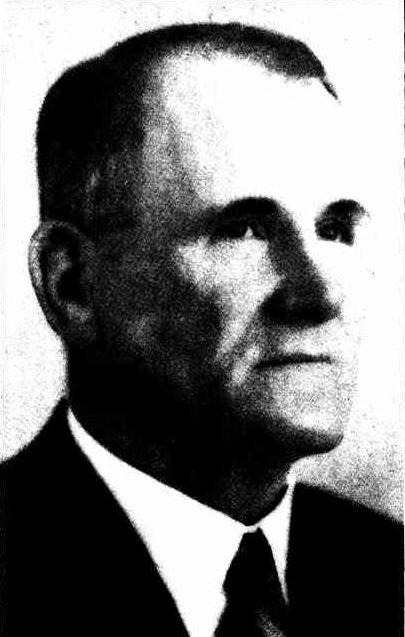
SIR FREDERICK STEWART. (Photo : Raymond Sawyer.)
THE pace now grows hot. The public rushed the Stewart bus, and the fleet grew steadily. Within ten years — that is, by 1928 — "F.H." as sole proprietor had 90 motor buses on the roads, all centering on Eddy Avenue. Depots were established at Burwood, Enfield, and Camperdown, and there was equipment for tyre treading, general repairs, electro-plating, and a certain amount of body-building. The employees numbered 350 men. The revenue in fares (with incidentals such as advertising) was over £300,000 per year.
A LITTLE story here. The buses ran every day except Christmas Day. Year after year, so splendid was the spirit among the employees, drivers, and conductors, that they joined with Stewart in making Christmas Day memorable for the poor. The buses — 40 to 50 — sped anywhere and everywhere through the industrial suburbs picking up scores, hundreds, even thousands of the dwellers of the back streets. Then all made their way to a selected spot, where they had a huge picnic and a great "feed," with Mr. and Mrs. Stewart as their hosts. The happiness of the children!
THEN Goliath awoke! The slumbrous State mumbled about tramway and railway revenue, and turned its gaze on Stewart. He had become too big to be disregarded. The National Government and Labour Government — each figured in turn in the counter-challenge by the State — decided that the Stewart competition must be wiped out. This was done by repressive regulations requiring payment of taxation amounting in some cases to the whole of the fare collected. On October 31, 1931, the Stewart bus services were closed down. They were then carrying 16,000,000 passengers per year, a record of which the beginning had been one old bus toiling along with a few Bankstown people. Those who like big figures will be interested to know that the red buses covered 3,500,000 miles in a year and consumed 500,000 gallons of petrol. Mr. Lang was Premier when the buses were forced off the roads. The fleet was simply put into the sheds. Mr. Lang fell, and the Stevens Government came into power about the middle of 1932. What would the Government do? Was there not a mandate to restore the old service? Let others argue about that. The ex-employees felt they had been martyred. An inquiry was held, and an advisory committee decided in favour of private control. The Government, however, about March, 1933, took control; the buses were released from the sheds, and the Government has been operating them ever since. It is a dramatic feature of the affair that the former Stewart depot at Burwood is now the headquarters of the State service — the same equipment, the same plant to a large extent, some of the "old hands" — only "F.H." missing from the busy scene. And on Thursday last it was announced: "The State Government proposes to spend £1,000,000 on trolly-buses and motor-buses." Goliath was bound to win in the end.
NOW let us glance back to the days when the public were handing over to Stewart that £300,000 a year in return for rides in the red buses. The Sydney Rotary Club (he was a Rotarian) "discovered" the crippled children of the poor in Greater Sydney — little ones with twisted limbs often hidden away in back rooms. How a number of the prominent business men of Sydney went at night to all kinds of queer homes to get names and details and arrange for the cripples to be medically examined is in itself a wonderful story. Some of the stricken had brightness and beauty and intelligence, the gifts of God, but no hope of developing their minds or having their limbs made straight. Much of that was rectified; and now let us come to the time when it was possible to take the cripples to their school at the Children's Hospital, Camperdown.
The Government (through its Departments) said: "There is the place to take them to, but we can't arrange transport." This whimpering by Goliath was too much for Stewart. He put his buses at the service of the cripples — free trips for the twisted ones and their guardians. Once again out of the goodness of his heart he was doing what the State might have done for a public out of whom it was wringing heavy taxation. And this on top of the fact that when the appeal for funds was made his was the first cheque for £1000.
THERE was a time when his drivers said: "If this goes on everyone will be riding free." For the Depression had reached Australia, and Goliath was bewildered. Businesses were crashing, and men were losing their jobs. Very real at the time, and an ugly memory now. Before there were any ration depots, and when all was confusion, Stewart sprang again. He thought first of the children, and a big milk company got orders from him to supply milk to various public schools in the industrial suburbs. The children who could pay a penny per day were already supplied, but thousands had no daily penny. Stewart saw to them.
The milk company knows the amount of his monthly cheque — a professional man earning as much would be well off. ... But that was a detail.
When the Government established the ration depots the hungry thousands had to get there! Goliath's system was not yet working smoothly. What happened? Just "F.H." again, and anyone with a ration card was given free transport on his buses. It was not merely a gesture. It is a matter of cold book-keeping that over 250,000 passengers travelled free to and from the ration depots. An amazing thing is that Goliath actually issued the tickets or cards that entitled the public to Stewart's free transport. In effect, Goliath said: "You are doing my job; it is beyond me." For a little while Stewart seemed to thousands of poor people a power greater than the State. Small wonder if the ration-riders happened to be families that had formerly looked to him for food. In his own centre — Burwood, Ashfield. Strathfield, Concord — his orders were: "Food and clothing to anyone in distress." This was in harmony with another order: "Carry all blind people without charge." He is a great organiser, a great democrat, a believer in the people, and a religious man of the rare type that lives its faith joyfully and has little to say about it.
STEWART has restless, well-directed energy. Transport on the earth was not enough for him. He saw the wonderful prospects of air transport, and backed Australian National Airways, considerably influenced by his faith in Kingsford Smith and Charles Ulm. The ambitious effort failed. There were three main reasons: (1) Need of a subsidy; (2) Shock caused by the tragic disappearance of the air-liner the Southern Cloud; (3) the crippling effects of world-depression. Stewart lost heavily, but was satisfied then, and is now, because he backed brave men, and in so doing linked his name with theirs as a pioneer supporter of Australian flying.
LADY STEWART. (Photo: Raymond Sawyer.)
NOW comes Radio.
The Council of the Churches acquired a licence for a radio station. Some meetings were held, and all agreed that the Churches had a duty to the community over the air. Not that the existing stations were exactly the Devil, but there should be one station to declare ideals and set a high standard. But when money was mentioned faces lengthened. Once again Stewart sprang. Again he was possessed by the fervour of the Pioneer. "I'll do the lot," he cried. Cheers, of course, congratulations, and admiration, coloured perhaps with a little envy of this broad-shouldered, bustling business man. A matter of merely £20,000 or thereabouts, and to-day he is still the owner of the important 2CH radio station, and has a working arrangement with Amalgamated Wireless under conditions that safeguard the ideals that appeal to him. Although no longer intimately concerned with 2CH, his influence lives over the air. For the purposes of 2CH he bought a big estate at Dundas, and built a new home on it close by his great aerials.
DOWN on the sea-coast between Manly and Deewhy, on the sands of Curl Curl, there is a Preventorium — as it is called — for ill-nourished children. Our late little friend Dr. Arthur, M.L.A., had urged the need of such an institution. The hearts of Mr. and Mrs. Stewart were touched, and a splendidly-equipped Home was built by them at a cost of about £8000. From various parts of the State, with the co-operation of the Teachers' Federation, little children are sent to Curl Curl for several weeks to eat well and sleep well, swim and sun-bake, and generally to have a glorious time. They go there in batches, and at times there are 60 to 70 playing together on the sands. . . Away in New Britain in tropic seas there is a splendid Stewart Hospital, a gift from "F.H." to the Methodist Mission. (We with-hold the large amount represented.) ... At the Dalmar Home at Carlingford a section was needed for babies; another Methodist institution. (We shall be reticent again.) .... One day the writer was asked by "F.H." to go with him up to Flinders- street. Detective Lawrence and others had brought under his notice the financial needs of an institution for First Offenders. Incidentally, on one such visit "F.H.'s" overcoat was "pinched." The institution got £500 and his overcoat was returned, so all ended happily. . . . We simply cannot mention all the amounts involved — it is so unfair to "F.H.;" but we should quote from our records that he sent a cheque for £1000 to Sir Philip Game when His Excellency, the Governor made an appeal for unemployed women. He is always generous, but we feel that he has a special love for children — he cannot resist them, nor can they resist him.
PARLIAMENT! . . .
He stood for Concord in October, 1930. His organisation was perfect, but he was a victim of the swing-over to Langism and was beaten. In December, 1931, he won the Federal seat at Parramatta. Then what a record! Within eight months he was a member of the Commonwealth Government — Minister for Commerce. We shall not pursue his Parliamentary history, except to say that he is not only popular, but is a real power. When he was re-elected and something approaching a deadlock took place owing to the claims of Dr. Earl Page and the Country Party he stepped out of the Ministry to make a vacancy, and Dr. Page now holds his portfolio of Commerce. It was an unselfish arid patriotic action in the interests of stable government, and it greatly enhanced his reputation in Parliament. A FEW days ago the ex-railway boy was knighted. He is Sir Frederick Harold Stewart, . . . His wife and their three daughters went to England with him about two months ago. Three sons, all married, are in Sydney. Lady Stewart shares her husband's popularity, and is heart-and-soul with him in his work and ideals. Just now Sir Frederick, whose Parliamentary office is Under-Secretary for Re-employment, is at Geneva, representing the Commonwealth at the International Labour Conference. His services are in the nature of a gift to his country, his tour being a private one.
THE narrative is not complete without a further reference to the Dundas estate of 40 acres. On it is built the new Stewart residence — a fine bungalow. But everything is in train for big developments. The interests of "F.H." are bewildering. His Parliamentary duties take up much of his time — and we have just remembered that he owns a woollen mill at Alexandria— a going concern with a capital of £40,000. While in Europe he will order new plant for the mill. When the writer made a call at the Dundas place not long ago, "F.H.," the picture of health, sunburnt and in great fettle, was tramping about in thick muddy boots and old clothes planning out a bowling green. He is fond of his roll-up. He rushed his visitors along to the tennis courts; he pointed out a fine selection of native flowering shrubs; he has a vast number of roses and can name them; his dahlias (in flower at the time) were show-pieces; all his machinery is electrical; there is an avenue of great palms (they were transferred in all their lordly maturity from another property); and — try to vision what this will be — there is an avenue (a double row) of Christmas bush, even now of fair growth, that in the early future will send many motorists on a pilgrimage to Dundas. There they will see half-a-mile of Christmas bush close to the road. But this only leads up to the real purpose of the estate, which once was an orchard, part of which is still there. Buildings — barns, pens, and so on— are all ready for the well-bred cattle and pigs that Sir Frederick will purchase before he leaves Europe. For Dundas is to be an experimental or model farm. In his garden and out in his paddocks he will be a real worker. . . .
Now we part from the "Stewart" and the "F.H." of the earlier part of this article, the boy of the railways, the man of the buses, and vision Geneva and Sir Frederick Stewart, where he has been addressing an audience of critical and distinguished international administrators and experts on behalf of Australia. . . . . W.R.C. The KNIGHT of DUNDAS (
1935, June 12).
Sydney Mail (NSW : 1912 - 1938), p. 10. Retrieved from
http://nla.gov.au/nla.news-article166110468
Return of Mrs. F. H. Stewart from the Islands
Mrs. F. H. Stewart, accompanied by her son Harold, her daughter Doris, Nurse McCutcheon, and Mrs. Carr, of Orange, returned from an Island trip, including Tonga, Samoa, and Fiji, by the 'Aorangi ' on Saturday, 23rd instant, having spent a very happy time in Fiji, where for the greater part of the time they were the guests of Rev. and Mrs. N. T. Dellar, at Bau. During their brief stay at Samoa and Tonga they were met and hospitably entertained by our Missionaries. Whilst in Tonga the members of the College Choir who, recently visited Australia, and while in Sydney were the guests of Mr. and Mrs. Stewart, entertained the party at a great welcome feast. The Queen of Tonga, the Prince Consort, and Mr. and Mrs. R. Page,, gave them a very warm welcome to the little Island Kingdom which owes so much to , Missionary enterprise. We are glad to report that Mrs. Stewart's health has apparently been fully restored, and her enthusiasm for Missions has been increased by this second visit to the scenes of so many Gospel triumphs. Return of Mrs. F. H. Stewart from the Islands (
1928, June 30).
The Methodist (Sydney, NSW : 1892 - 1954), p. 5. Retrieved from
http://nla.gov.au/nla.news-article155302501
FOR CHURCHES
NEW WIRELESS STATION
F. H. STEWART'S OFFER
It was reported at a meeting of the Council of Churches this afternoon that Mr. F. H. Stewart had offered to build for the Protestant Churches a wireless broadcasting station. The churches already hold a B class license, and this afternoon a resolution was carried gratefully accepting Mr. Stewart's offer. A committee was appointed to meet Mr. Stewart to arrange details. The new station will be known as "2CH." FOR CHURCHES (
1931, May 5).
The Sun(Sydney, NSW : 1910 - 1954), p. 9 (FINAL EXTRA). Retrieved from
http://nla.gov.au/nla.news-article224693149
NEW WIRELESS MAST AT DUNDAS.
Mast for the broadcasting station erected by Mr. F. H. Stewart, and to be available for use by the Council of Churches. NEW WIRELESS MAST AT DUNDAS. (
1931, December 22).
The Sydney Morning Herald (NSW : 1842 - 1954), p. 12. Retrieved from
http://nla.gov.au/nla.news-article16827198
Mrs. F. H. Stewart
Mrs. F. H. Stewart, who is an earnest advocate of, and generous contributor to our Foreign Mission Cause, has recently undergone a serious operation, from which she is making good progress towards recovery. She is at present an inmate of St. Kilda Private Hospital, and does not expect to return to her home for some weeks; her medical adviser has requested her to refrain from taking part in public meetings for the next few months. We are sure that the friends of missions will pray for her speedy and perfect recovery. Mrs. F. H. Stewart (
1929, November 16).
The Methodist (Sydney, NSW : 1892 - 1954), p. 3. Retrieved from
http://nla.gov.au/nla.news-article155297372
MR. F. H. STEWART
The resignation of Mr. F. H. Stewart. M.H.R., from the directorate of Associated Newspapers Ltd. has been tendered to his colleagues, who have accepted it with the greatest regret. Mr. Stewart's action is in consonance' with his determination, expressed recently, to relinquish all positions of private Interest which might be thought, by any possibility, to conflict with his duties in the Ministerial office which he has accepted. MR. F. H. STEWART (
1932, October 26).
The Sun (Sydney, NSW : 1910 - 1954), p. 11 (LAST RACE EDITION). Retrieved from
http://nla.gov.au/nla.news-article229250647
"Stewart, Frederick Sir Harold, Parramatta, 1940" -- in ink on reverse. "1923" -- in pencil on reserve.
same as:
MR. F. H. STEWART, M.H.R. Photo by Howard Harris, Parramatta. MR. F. H. STEWART, M.H.R. (1931, December 21). The Cumberland Argus and Fruitgrowers Advocate (Parramatta, NSW : 1888 - 1950), p. 2. Retrieved from http://nla.gov.au/nla.news-article106830439
Sir Frederick Harold Stewart (14 August 1884 – 30 June 1961) was an Australian businessman, politician and government minister. His continuing political commitment was to the establishment of a national insurance scheme and the shortening of working hours to improve social conditions during the Great Depression, despite the opposition of his own party.
Stewart was born in Newcastle and educated in public schools in Newcastle and worked for 20 years as an administrative officer in the New South Wales Government Railways. In 1908 he married Lottie May Glover and they had six children. He was a prominent Methodist Lay Preacher. In 1919 Stewart developed the Sydney suburb of Chullora and owned the Metropolitan Omnibus Company that serviced the area. He also had an early interest in aviation and broadcasting. He established radio station 2CH and with Charles Kingsford-Smith and Charles Ulm established Australian National Airways.
Political career
Stewart failed to get pre-selection as a Nationalist candidate for the Australian House of Representatives seat of Martin at the 1929 election and ran unsuccessfully for the state seat of Concord at the 1930 election. He won the federal seat of Parramatta for the United Australia Party at the 1931 election and held it until his retirement before the 1946 election. He supported a shorter work week to reduce unemployment during the Great Depression and programs to improve social conditions such as national insurance and workers' housing schemes.
Stewart was appointed Minister for Commerce from October 1932 had responsibility for trade policy. In November 1934, he stood down to allow the Country Party to be brought into the ministry, with Earle Page becoming Minister for Commerce. He refused Joseph Lyons's offer of a junior ministry and instead became parliamentary under-secretary for employment, but resigned this position in February 1936 so that he could concentrate on his private scheme to improve social conditions. He was knighted in 1935. After the 1937 election, under pressure from Stewart, Lyons announced a limited national insurance scheme, but Stewart refused a position in Cabinet.
Stewart puts a rivet in the keel of HMAS Bathurst at the keel laying ceremony at Cockatoo Dockyard, Sydney, 10 February 1940
Stewart was appointed as Minister for Health and Minister for Social Services in Robert Menzies' ministry in April 1939 and continued to press for the implementation of a national insurance scheme. In November 1939, with the outbreak of World War II, he was given the additional portfolio of Minister for the Navy and in January 1940, he became in addition Minister for Supply and Development on Richard Casey's appointment as Ambassador to the United States. This portfoilio was responsible for procuring supplies for the military. In March 1940, he lost the portfolios of health and the navy, but retained social services and supply and development in the second Menzies Ministry. He was criticised over his performance in supplying the military, despite such ingenuity as finding and refurbishing 15,000 World War I uniforms and he lost the supply portfolio from October 1940 in the third Menzies Ministry, but was appointed Minister for External Affairs, retained social services and regained health. He held the three portfolios until the fall of the Fadden government in October 1941. In opposition he served as chairman of the Joint Committee on Social Security in 1943 and 1944.
Stewart's first wife died in 1943 and in 1945 he married Hilda Marjorie Evelyn Dixon. He was a noted philanthropist following his retirement from parliament. He died at the Royal North Shore Hospital, St Leonards, survived by his wife and three daughters and two sons from his first marriage.
From Wikipedia.
OUR MOTOR 'BUSES CARRY 40,000,000 PERSONS
Amazing Facts About Ever-growing New Transport Service WILL IT CROWD TRAMS OFF THE ROADS?
It was the strike which revealed the true position, and prospects of motor transport against rail traffic. Prior to that there was just one or two services of 'buses and they ran no more than a mile — to Darlinghurst and Surry Hillls for example. Immediately afterwards the growth of the business was very pronounced. It has continued ever since and day by day its popularity in creases proportionately. The omnibus services of Sydney are veritable goldmines and yearly they are taking thousands from the hands of the Government. It looks as though neither all the King's horses nor all the King's men will ever be able to prevent them from doing so, The following amazing figures speak for themselves: In November, 1922, the 'bus registrations totalled 254. In the same month of last year the total was 350. At the present rate with which the Industry is growing, this year's figures will be more remarkable still.
YEARLY SALARY LIST,
A conservative estimate of the number of persons carried by all the 'buses last year alone was forty millions. Some of the proprietors do not issue tickets on the vehicles and consequently many thousands are not accounted for. What would the Government do to have the job of adding a total like that to its annual traffic figures? Over 1800 men arc directly employed in the actual running of the buses. They are the licensed employees. Apart from those there are just as many unlicensed and distinctive from those again is an enormous army of general tradesmen, such as mechanics, greasers, washers, inspectors, body-builders, and so on, Taking £4 as the average weekly wage, the total annual salary list Is over £100,000. That also is a modest estimate. It must not be forgotten either that the majority of persons carried by the services are of the throughfare class— that is, they are carried from the limits of the yards and not eotionally, a fact which seems to indicate that people prefer the 'bus mode of transport for this alone, that they are not. obliged to change from tram to tram or from train to train as is obligation of a big number of the public living in remote suburbs.
ENERGETIC PRESIDENT.
The motor 'bus services are controlled under the protection of the Motor 'Bus Section of the Motor Traders' Association of which. Mr. F. H. Stewart, of Liverpool-road, Enfield, is the president. Mr. Stewart is one of Sydney's shrewdest and, most popular business men and the sole proprietor of a line of 'buses. .He is a firm believer in the standardisation of vehicles on the road. He is the possessor of a fleet of fifteen Leylands and has six additional 'buses in course of manufacture. He thinks that if the proprietors would run motors of a standard make they would improve their services and profits as well. Referring to the question of increased motor taxation, Mr. Stewart remarked to the Sunday Times, on behalf of his Association, that if additional taxation be a condition precedent to the provision of good roads, then the Association would welcome the taxation, but with one very important qualification — that all other beneficiaries from the providing of good roads be required to contribute their due quota.
'Many people, and principally aldermen,' Mr. Stewart said, 'seem to believe that motor 'buses are the arch fiends of the roads. Official figures reveal that the 'buses represent less than one per cent, of the motor traffic using the roads. Motor 'buses are a remarkable optical Illusion, They look big and sometimes clumsy, but If they carried, Instead of human freight, immense loads of bricks, sand, and other heavyweight stuff, there might be some cause for saying they were rough on roads. They are not, however,'
During the tramway strike of 1917, thousands of persons living in the suburbs snapped their fingers at the industrial turmoil because they were able to travel to and from business in the Impromptu vehicles placed upon the roads by a few enterprising men. When the strike ended they re-boarded the trams. Little did they realise, however, that that strike had been the origin of a motor omnibus service that Is now one of the most important and amazing institutions In the Southern hemisphere. The 'buses tell the story of Sydney's growth more eloquently than does any other phase of civic activity, and today we find every suburb, and not a few districts that have not yet reached a state Justifying their designation as suburbs, connected with the city by direct, cheap routes, As well, we have an Intro-suburban service, and the 'buses are carrying no fewer than forty millions of passengers every year, Will they eventually crowd the trams off the streets, Just as the meter car has relegated Old Debbin to the beurn whence no good horse ever returns

1 THIS PICTURE SHOWS PORTION OF THE FLEET OF MOTOR 'BUSES OWNED AND CONTROLLED BY MR. F. H. STEWART, PRESIDENT OF THE MOTOR 'BUS SECTION OF THE MOTOR TRADERS' ; ASSOCIATION. MANY OF MR STEWART'S 'BUSES RUN TO CHULLORA, WHICH IS REGARDED AS THE EVELEIGH OF THE FUTURE. ALREADY THE SUBURB IS A HIVE OF RAILWAY INDUSTRY# MR STEWART IS THE FATHER OF CHULLORA AND GAVE THE PLACE ITS NAME.
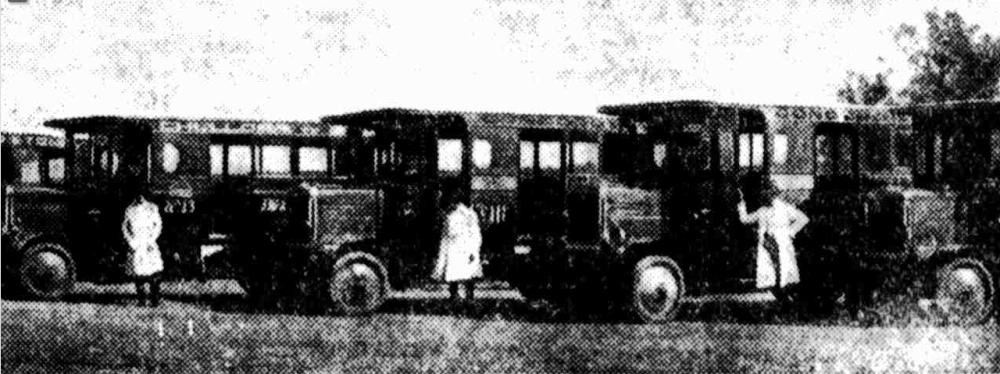
THE BUSES.
Mr. F. H. Stewart's Offer.
The secretary of the Omnibus Proprietors' Association (Mr. A. G. Lutton) pointed out yesterday that, if the Government had accepted Mr. P. H. Stewart's offer, the value of his 90 buses would have more than balanced the amount of compensation the Government would have been obliged to pay on the other services, which, under the terms of Mr. Stewart's offer, It would have had to acquire.
MOTOR OWNERS' OBLIGATIONS.
The Transport Board pointed out yesterday that a number of motor vehicle owners had not yet taken out licences or permits, or secured exemptions under the State Trans-port (Co-ordination) Act.
Motor omnibuses, service cars, taxi cabs, and private hire cars must be licensed. All motor lorries carrying goods or passengers for hire or for any consideration or in the course of any trade or business whatsoever, are required to be licensed unless granted special exemption. Any person who sends or causes to be sent or conveyed any passengers or goods by a public motor vehicle which Is not licensed is guilty of an offence. THE BUSES. (
1931, November 28).
The Sydney Morning Herald (NSW : 1842 - 1954), p. 17. Retrieved from
http://nla.gov.au/nla.news-article16819388
The suburb of Chullora was originally part of the area known as Liberty Plains, which was land given to the first free settlers who arrived in Sydney Cove on 6 January 1793. In the 1950s, many immigrants from Europe were housed in the area. Once established, they moved to other parts of Sydney. Chullora was the name used for one of the estates in this area. Chullora is an Aboriginal word meaning 'flour'. - from Wikipedia
BIRTHDAY- HONORS TWELVE AUSTRALIANS KNIGHTED '.. .
The Australian list of honors, awarded on the occasion of the Jubilee and His Majesty's birthday contains many well-known names. Twelve have been knighted, including two ladies. The Sydney recipients of knighthoods include Ald. Parker. (Lord Mayor of Sydney), Messrs. F. H. Stewart, M.P., F. H. Tout, M.L.C., T....and Dr. Jean Connor, of Melbourne, have each been given the rank of Dame (K.C.B.). BIRTHDAY HONORS (1935, June 4).Lithgow Mercury (NSW : 1898 - 1954), p. 2 (TOWN EDITION). Retrieved from http://nla.gov.au/nla.news-article220681702
SIR FREDERICK HAROLD STEWART.
We heartily congratulate Sir Frederick Stewart on the honour conferred upon him by the King. His parents were good Methodists of Merewether, Newcastle, and from childhood he has been linked up with our Church and Sunday School. He was converted in his early youth, and has continued to be a loyal member and earnest worker of our Church. In many circuits he has rendered effective service as choir conductor, local preacher, and temperance advocate. As a member of our Conference Foreign Missionary Committee, he has been an earnest and intelligent advocate and a most generous giver to the missionary cause. SIR FREDERICK HAROLD STEWART. (
1935, June 8). The Methodist (Sydney, NSW : 1892 - 1954), p. 8. Retrieved from
http://nla.gov.au/nla.news-article155307402
GARDEN FETE AT ST. CLOUD'
A beautiful day on Saturday, 25th September, brought to many Auxiliary women's minds a note of praise to God for His many blessings, as that was the day of our Garden Fete at 'St. Cloud,' Dundas. Sir Frederick and Lady Stewart had very graciously lent their grounds for the day, and they and their family threw themselves most heartily into the preparations and into every event of the day. Our Auxiliary President, Mrs. W. H. Cheetham, had charge of the opening service at 3 p.m., and was supported by her own officers, and Miss Whiteman and Mrs. H. W. Chancellor, Fete officers, also Rev. P. L. Black and Rev. G. H. Hewitt. Lady Marr, in a brief speech, graciously declared the Fete open, and was presented with a souvenir and posy, of pink .carnations by little Beverley Stewart. Although there was not the novelty of the first Fete, about 1,000 of our Methodist folk and their friends responded to our call, and spent a very enjoyable afternoon. Tennis, dart-throwing, pony rides, the splendid music of the Eastwood-Epping band, a delightful afternoon tea, most capably managed by a big staff, controlled by Miss B. Heighway, many well stocked stalls, and a visit to Sir Frederick's farm, filled up a most interesting afternoon. The Auxiliary women are greatly indebted to Mr. H. Hazelwood, Mr. H. D. Barkla, and his stewards, Mr. D. Pettigrew and Mr. C. Rayward, for their splendid help, without which such organisation and success would be difficult. As ticket money is not yet in, it is not possible to give financial results. The stalls were in charge of Miss B. Heighway, Mrs. F. Matthews, Mrs. H. W. Robin, Mrs. W. O. Brown, Mrs. H. Wheeler, Mrs. E. Peacock, Mrs. J. Edgar, Miss Doris Stewart, Miss Enid Stewart, Miss Olive Bembrick, and Mrs. S. Woolnough. — J.C.G. GARDEN FETE AT "ST. CLOUD" (
1937, October 2).
The Methodist (Sydney, NSW : 1892 - 1954), p. 12. Retrieved from
http://nla.gov.au/nla.news-article155285281
QUEEN SALUTE'S GIFT.
21'st Birthday.
PARTY AT DUNDAS
To celebrate the coming of age of their daughter. Miss Doris Stewart, Sir Frederick and Lady Stewart held a dance at their home, St. Cloud, Dundas, last night, and among their guests was Queen Salote of Tonga
Queen Salote s birthday gift to Miss Stewart was a reading lamp The shade of the lamp was of pink hand embroidered silk and the bowl was of pink glass
Miss Stewart wore the frock in which she was presented at the Jubilee Court It was of White cobweb lace embroidered with peal Is and silver beads. She pinned a spray of white hyacinths at the neckline.
As Miss Stewarts birthday is today - her father’s was yesterday-the guests waited until midnight to drink her toast and offer their congratulations.
BEAUTIFUL FLOWERS
The drawing-room of St Cloud was decorated with autumn loned flowers, chiefly poppies, jonquils and daffodils in the dining room which was used foi dancing there were pink stork and sweet peas and violets The supper room decorations were in pale blues, greens and pinks the chief flowers being stock sweetpeas and poppies
Lady Stewart who with Sir Frederick received the guests wore a black sheer silk gown with black sequin sleeves Miss Enid Stewart chose a Dubarry pink taffeta frock made in the Dubarry style and Miss Nell Stewart wore a blush pink chiffon frock finished on the bodice and hem with shirring.
Queen Salote of Tonga was accompanied by the Crown Prince Taufa, and her lady-in-waiting Miss Teitutukl Oneone and the guests also included Sir Archdale and Lady Parkhill, Sir Charles and Lady Man, Mr. and Mrs. J A Perkins Mr. and Mrs. S C Gollan Mr. and Mrs. A Line Mr. and Mrs. R Dein, Mr. and Mrs. R Aikins, Rev and Mrs G H Stewart, Misses Nona and Joy Porter Jean and Nancy Charlton Dorothy Lackey "Babs" Mayhew, Jan and Dorothy Gardener Athalie Sullivan and Mary Tufrey. QUEEN SALUTE'S GIFT. (
1936, August 15).
The Sydney Morning Herald (NSW : 1842 - 1954), p. 11. Retrieved from
http://nla.gov.au/nla.news-article17261078
Todays Weddings
Federal Minister's Daughter to Wed in Sydney To-night P a y n e— Stewart Ceremony
SYDNEY, May 3. — At the reception to be held at the Pickwick Club to-night, following the marriage at the Wesley Chapel, Castlereagh Street, of Miss Doris Margaret Stewart to Mr. Arthur Phillip Payne, the bride's father, Sir Frederick Stewart, Minister for External Affairs, will announce the engagement of his daughter, Miss Enid Stewart, to Mr. Bill Hewson, of the Reserve Coastal Defence.
Earlier in the evening Miss Stewart will be a bridesmaid at her sister's wedding. The bride is the eldest daughter of Sir Frederick and Lady Stewart, of St. Cloud. Dundas. With her trained frock of Brussels lace over satin she will wear a Brussels net veil and carry a bouquet of white flowers. Frocks of heaven pink marquisette and pale pink floral coronets will be worn by the bridesmaids and flower girls, Misses Enid and Nell Stewart and little Beverley and Diana Stewart. The bridegroom, who is the eldest son of Mr. and Mrs. W. A. Payne, of Eastwood, will be attended by Messrs. Russell Payne and Sid Scorer. Rev. G. H. Hewitt will officiate. To-day's Weddings (
1941, May 3).
The Telegraph (Brisbane, Qld. : 1872 - 1947), p. 8 (SECOND EDITION). Retrieved from
http://nla.gov.au/nla.news-article186645981
HEWSON-STEWART
White beaded marquisette was worn by Miss Enid Stewart,' daughter of Sir Frederick and Lady Stewart, of St. Cloud, Dundas, who was married on November 15 to Mr. Bill Hewson, son of Mrs. Hewson, of Grenfell and Eastwood, and of the late Mr. William Hewson. Rev. G.' H. Hewitt, assisted by Rev. W. Fullerton, performed the ceremony at the Eastwood Methodist Church. The bride's six attendants wore blue marquisette. They, were Mrs. Phil Payne, Mrs. Jack Ritchie, Misses Nell Stewart and Joan Harrison, and her two nieces, Beverley and Diana Stewart. Mr. John Asher was best man. The reception was held in a marquee in the grounds of St. Cloud. Mist blue with a mist blue straw hat trimmed .with flowers, and navy accessories, were worn by the bride when leaving for the honeymoon. HEWSON—STEWART (
1941, December 3).
The Cumberland Argus and Fruitgrowers Advocate(Parramatta, NSW : 1888 - 1950), p. 8. Retrieved from
http://nla.gov.au/nla.news-article107304693
Death of Lady Stewart
LADY STEWART, wife of Sir Frederick Stewart, MHR, for Parramatta, died yesterday afternoon in Gloucester House, Royal Prince Alfred Hospital. She had been in ill-health for about six months. Lady Stewart was an executive member of the NSW Society for Crippled Children; a founder of the Methodist Mission Hospital in New Guinea, the Methodist Babies' Home at Carlingford, and Stewart House, Curl Curl, which cares for children suffering from malnutrition. She also helped to found the Parramatta branch of the YWCA, nearly two years ago. She was also a member of the Australian Red Cross Society, president of the Eastwood branch of the Ryde Hospital, and a member of the board of Dalmar Methodist Children's Home. Two of Lady Stewart's sons-Major Harold Stewart and Major Neville Stewart, AAMC— are with the Army. Major Harold Stewart left with the first contingent of the AIF to go overseas. Other children are Mr. Raymond Stewart, Mrs. Phillip Payne, Mrs. Bill Hewson, and Mrs. R. Haigh. The funeral will leave Wesley Chapel, Castlereagh-street, city, for Northern Suburbs Crematorium on Monday afternoon. Death of Lady Stewart (
1943, September 26).
The Sun (Sydney, NSW : 1910 - 1954), p. 7. Retrieved from
http://nla.gov.au/nla.news-article231614004
Lady Stewart
AN APPRECIATION
By G.H.H.
In the passing of Lady Stewart we have suffered a great loss. Her husband has lost a loving and devoted wife; her children a wonderful mother; her wide circle of friends and relatives a gracious, helpful personality; and our Methodist Church a faithful and self sacrificing member. She was born at Newcastle on the 24th March, 1888. Her parents, Mr. and Mrs. William F. Glover, were highly respected and faithful Christians, so her childhood was spent in Hallowed environment. When I first met her, 38 years ago, she was living with her widowed mother at Newcastle, and had already definitely linked up with the Church and Sunday School. I have a vivid recollection of her as a bright and beautiful girl, singing in the choir of our then new Central Mission Hall; young Frederick Stewart was also a member of that choir, they sang together, and continued to do so until the Master called her to the choir above.
In 1908 she was happily married to the man she loved, and went with him to their new home at Wellington. Today a mutual friend has been giving me a glowing account of the fine work she did in our church there, where her husband was choir master and a local preacher. Playing the organ, singing in the choir and at church concerts, taking an active part in the other activities of the church, she exerted a fine influence, and was an inspiration to many. Twenty-five years ago I met her again at a missionary service I was conducting in Strathfield Church; my wife' became her dearest friend, and through the intervening years our family friendship has been a tender and sacred thing. Lady Stewart's love for her dear old mother made a deep impression on me; particularly during the long years of illness when she gradually lost her sight. She was always thinking of others, especially of the sick and needy, and more especially of sick and needy children.
When financial prosperity came to them she, with her husband, found a great joy in making generous gifts. Here is a typical case. On the morning of the day when the inaugural meeting to form the Crippled Children's Society was held in Sydney, she was taken to hospital for a serious operation, but before the ambulance men carried her from the room, she called her husband back and asked that, as a thank offering for the medical attention and help so freely available to her, he should give a thousand pounds to enable the crippled children also to have medical service available to them. This was the first contribution to the new society that has alleviated the sufferings of thousands of crippled children.
Then followed the gift of Stewart House at Curl Curl, which cares for children suffering from malnutrition. Next came the Stewart Hospital in New Britain for our native people. Another fine gift was the Methodist Babies' Home at Dalmar. She was also a member of the executive of our Women's Auxiliary to Overseas Missions, and a generous contributor to its funds. In Red Cross and Hospital work she earned a good degree. Not only did she join with Sir Frederick in the generous giving of many thousands of pounds to these and other worthy objects, but she gave the work of her hands and the love of her heart to the holy task of blessing and cheering little children and sick and needy people. It was her delight to knit garments for the Dalmar babies, and to present choice flowers to lonely sufferers. She was a woman of prayer and beautiful trust in her Lord. For her husband and her children and grandchildren, her love was wonderful. Two of her sons— Major Harold Stewart and Major Neville Stewart, AA.M.C— are with the Army. Her other children are Mr. Raymond Stewart, Mrs. Phillip Payne, Mrs. Bill Hewson, and Mrs. R. Haigh.
At Gloucester House on Saturday, 25th September, surrounded by her loving husband and children, she passed quietly away to her Heavenly Home. After a beautiful and largely attended service, conducted by the President of the Conference, held in Wesley Chapel on the 27th September, we laid her dear body to rest in the Northern Suburbs' Cemetery. To me there comes the vision of the happy girl singing in the choir at Newcastle, and the sure hope that in the choir above she is singing the Redeemer's praise. Lady Stewart (
1943, October 9).
The Methodist (Sydney, NSW : 1892 - 1954), p. 12. Retrieved from
http://nla.gov.au/nla.news-article155472537
STEWART - GLOVER.- On April 8th, at the Methodist Mission Hall Newcastle, by Rev. F. Colwell, Frederick Harold, of the Railway Department, Wellington, and third son of James H. Stewart, to Lottie May, youngest daughter of Mrs. W. Glover, of Newcastle. Family Notices (1908, April 18). Newcastle Morning Herald and Miners' Advocate (NSW : 1876 - 1954) , p. 4. Retrieved from http://nla.gov.au/nla.news-article138404188
DEATH,
GLOVER.-December 6, 1926, at the residence of her daughter Mrs. F. H. Stewart, Burwood-road, Burwood, Margaret, relict of the late William F. Glover, late of Newcastle. Interment will take place at Singleton, 11 a.m., today. Family Notices (
1926, December 6).
Newcastle Morning Herald and Miners' Advocate (NSW : 1876 - 1954) , p. 4. Retrieved from
http://nla.gov.au/nla.news-article135178483
Lottie's Parents: Marriage
3571/1874 GLOVER WILLIAM ROBINSON MARGARET PATRICKS PLAIN
(Singleton in its early years was also called Patrick's Plains.)
This item sharing a snapshot of 1970's Elanora, and another wonderful car,is courtesy of Jeff Pickering - Old Sydney Album: Facebook Group:
I bought the Talbot in 1963 from a Scottish gentleman at Springwood in the Blue Mountains. It had survived a fierce bushfire which had completely destroyed several other nearby vintage cars. Here it is being moved by a kind car club member to my first permanent garage and work space at Parramatta. I sold the car a few years later and never saw or heard of it again. - Jeff PIckering
SIR FREDERICK STEWART
Seized Opportunities OUTLOOK UNCHANGED BY SUCCESS '
Shortly after he was knighted by King George V. at Buckingham Palace in 1935, Sir Frederick Stewart, who had started his career of public service as a junior clerk in the railways at Newcastle, remarked that 'F.H.' was what his friends always called him and he liked the sound of it much better than his formal title. He has the distinction of being the only locally born resident of Newcastle to have been honoured with a knighthood. With a disposition that is essentially natural and practical and an approachableness which his many and varied activities have not destroyed. Sir Frederick Stewart quickly dispels any impression that success might have changed his outlook. When he left the railway service in 1918, he was one of the most promising officers engaged on industrial work and his views on industrial awards and their interpretation were always listened to with respect. But 'F.H.,' always on the lookout for opportunities, saw and seized one when road transport began to show its possibilities. So he left the rail for the road and in a very few years had the largest and most flourishing 'bus transport organisation in the Southern Hemisphere. The Metropolitan Omnibus Transport Company, known for its punctuality and courtesy, and of which 'F.H.' was the governing director and the main driving force, kept adding to its fleet and , erecting new depots equipped with the latest facilities for service and repair work. Then came the famous Transport Co-ordination Act of 1931 which legislated the 'buses off the road. 'F.H.' was philosophic for himself, but very concerned on account of his ' 400 employees and so offered to present the whole of the fleet to the Government if it would keep the vehicles on the road and the men in work. The offer was declined. Developing a 'bus transport organisation to such a high state of efficiency was not enough to absorb the whole of the energy of F. H. Stew-i art, for he was prominent also in a number of other contemporary activities. The late Sir Charles Kingsford Smith and Charles Ulm found him ready to co-operate with them in the establishment of an air service between Sydney and Brisbane and Sydney and Melbourne, and so he became chairman of the original Australian National Airways which operated successfully without Government subsidy until the tragic loss of the 'Southern Cloud' when travel by air fell away so severely that the company had to discontinue the service. He gave some attention to roads too, and as a road construction contractor with a highly efficient plant, was responsible for constructing a number of important sections of the New South Wales highways. He also found time to control a woollen mill near Sydney and at the same time establish and control personally 2CH broadcasting station. He it was who put the station on its financial feet as a commercial advertising station.
ENTRY INTO POLITICS
Then came his entry into the Federal Parliament followed quickly by appointment as Minister for Commerce in the first Lyons Ministry. That was in 1932. It meant sacrifice of the numerous business activities. 'F.H.' did not shirk this, but with characteristic promptness shed them all to devote himself to the business of his country. His grasp of the intricate economic problems of the wheat, dairying and fruit industries and measures to bring about stabilisation while at the same time piloting through Parliament measures dealing with wireless equipment on ships and far-reaching amendments to the coastal clauses of the navigation act, cause his departmental officers— looking back— to wonder how it all was done.
When his Government took office, the Prime Minister (Mr. Lyons) called on F. H. Stewart to deal with the acute unemployment situation and in the second Lyons Ministry, he was appointed Minister for Commerce and Minister for Employment. Then came one of the self-sacrificing acts which jut out every now and then in the career of this remarkable man. Discarding the long established tradition that a Parliamentarian's first and most important care is to have and to hold power, 'P.H.' offered ' to relinquish his portfolio so as to facilitate the changes entailed in a coalition with the 'Country Party. '? I As Parliamentary Under Secretary ] for ' Employment he became responsible to the Government for the policy to be adopted for alleviating unemployment. ' In consultation with the State plans were soon evolved for Commonwealth assistance in prospecting for go}d and for re-afforestation. These are probably the soundest of all the unemployment' relief 'measures 'for they are producing a return for the expenditure'.' I Commonwealth and State' public works programmes were formulated as further aids and receiving the endorsement and financial blessing of the Government, they were soon under way.
VISIT OVERSEAS
When 'F.H.' decided in 1935 to make his first Trip to England, the employment statistics were improving steadily, but be 'was convinced that unemployment was a recurring 'malady that needed a long range remedy and so he resolved in find out what other countries had discovered.- ton ?his investigations ia the United Kiiig?dom, the continent of Europe, Canada and USA,he paid his own expenses. 'He even took his own motor' car 'at nils own cost and used it overseas-in the course of his investigations.--As leader of 'the Australian Delegation to the International Labour Conference he impressed : the representatives of '40 countries as an'experienced leader in industry-,- who --was prepared' to entertain advances ideas on reduction of hours of work, and kindred topics. Continuing his good work in other directions, Sir Frederick and Lady Stewart provided and equipped Stewart House at Curl Curl, a preventorium for ill-nourished children, and also provided a wing of the Methodist Dalmar Home at Carlingford and a Mission Hospital in New Britain. These are but a few of his numerous gifts to charity. His sterling character, and understanding of, and sympathy with, the insecurity — social and economic— of great numbers of Australians, impelled him, at the height of his career, to devote his energies to a policy of social security and betterment. Since its inception he has been chairman of the New South Wales Housing Council which included representatives of municipal and public bodies. He is also chairman of the Free Library Movement. Now, as Minister for Health and Social Services, he has not lost faith in national instance. He has said that Australia is a long way behind some the other countries in the provider for the social security of her people. He takes the broadest view of the present situation and considers that social Justice as well as strength in the armed forces is essential to national security. A very true picture of this remarkable man is given in the reference of leading Sydney newspaper some years ago when it described h ni as 'a pocket Hercules, short of stature but muscular and cheery, a man with a pioneering mind, amazing energy, and splendidly courageous.' Another evidence of the charitable impulse of Sir Frederick and Lady Stewart is to be found each week-end at their delightful home. 'St. Cloud.' at Dundas, when groups of young people assemble for sport, the proceeds of whish are provided for hospital benefits. From their home Sir Frederick and Lady Stewart can see a large part, of the city and environs of Sydney and it is here that they, together with their family, delight to spend such leisure as the pressing nature of their public duties permit. Not the least satisfaction they derive j is in the knowledge of the happiness i they have been privileged to bring into the lives of so many other people in the community less fortunately placed than themselves. Sir Frederick Stewart, as Federal Minister for Health, officiated at the opening last week of Glen Innes' Centenary Celebrations. SIR FREDERICK STEWART (1939, October 21). Glen Innes Examiner (NSW : 1908 - 1954), p. 3. Retrieved from http://nla.gov.au/nla.news-article178520962
THE STEWART MEMORIAL HOSPITAL AT DUNDAS
It is rather a sad stage in our history that the only kind of buildings permitted to be built are hospital buildings. For the rest, even with housing, the hands of the clock have stopped. Nothing is proceeding but the war. Fortunately it is going well, as far as the winning side is concerned, but the aftermath shows -that there are two losers in every war—the conquering and the conquered, for death and destruction are griefs to be borne by the bereaved and, for the living, there are blasted hopes, broken spirits, broken bones, physical and mental distress that will take years and years to eliminate or replace.
The only soul satisfying thing is that once again we hope to be able to live our lives in our own way, and not as enemies would have us live. This freedom has ever been worth fighting for. Some educational buildings soon to be built will show the other aspect of life, that "Hope Springs Eternal" and that the stage is being set for the new awakening and realisation in young people's thoughts. Let us hope they will spring to it diligently and not be retarded in their efforts by slow movement decrees of unionists and Labour Governments. Our country has a lot of leeway to pick up. We show on these pages a new hospital for which working drawings and specifications are at present in course of preparation and it is hoped to call tenders within a few weeks.
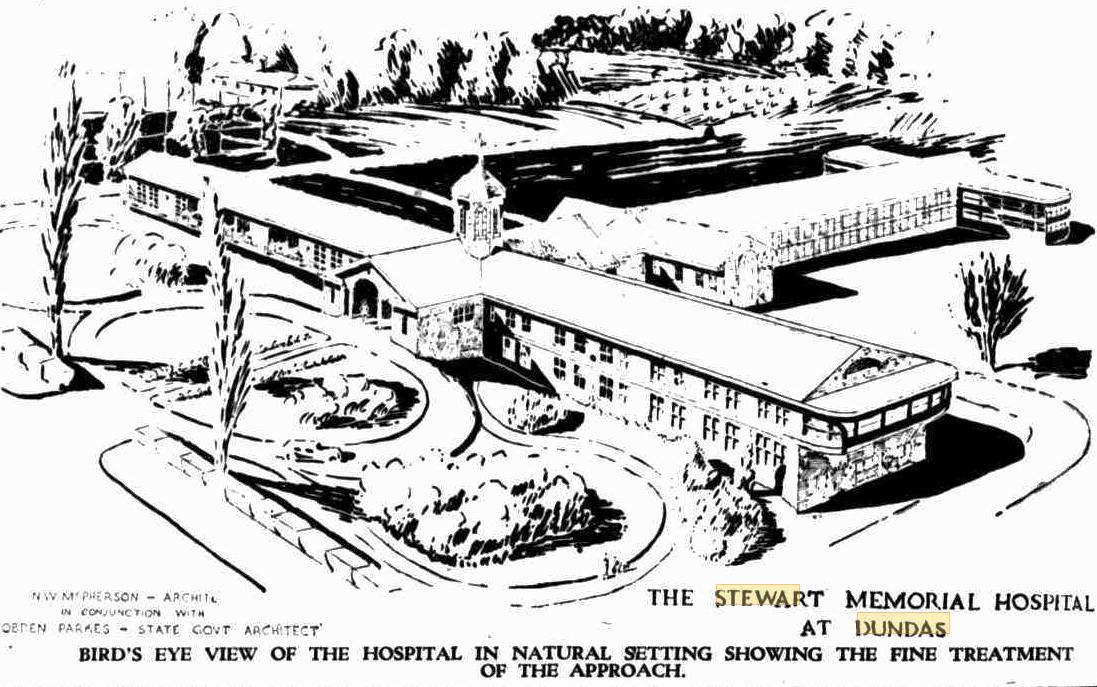
M.W. M'PHERSON - ARCHITECT. THE STEWART MEMORIAL HOSPITAL IN CONJUNCTION WITH OBDEN PARKES – STATE GOVT ARCHITECT' AT DUNDAS BIRD'S EYE VIEW OF THE HOSPITAL IN NATURAL SETTING SHOWING THE FINE TREATMENT OF THE APPROACH.
TYPICAL FLOOR PLAN.
S I T E P L AN THE SITE PLAN SHOWS THE FIRST PORTION TO BE PROCEEDED WITH AND THE NURSES' HOME —THE FORMER RESIDENCE OF SIR FREDERICK STEWART.
The hospital will be erected for the Central Methodist Mission on a fine 15'acre site in Spurway Street, Dundas, generously given by Sir Frederick Stewart. The residence with new additions will become the Nurses' Home. The hospital building will be entirely new. It will be erected in two stages, the first will comprise two ward blocks of 20 beds each and the central administration block. The future additions will comprise two more ward units making 80 beds in all.
The design is specialised to suit chronic and incurable patients. Thus while giving full hospitalisation it provides the additional floor space required for mobile and ambulatory cases. A plan of the main floor shows how the wards are all placed on the northern wall and the service rooms on the south. A balconette runs the full length on one block, blocking no light but practically converting all the wards into verandahs. Triplchung box frame windows will enable the heads of beds to be wheeled on to it. The service floor containing main kitchen and its departments will be situated under the western ward unit. An electric food elevator will deliver into the ward servery situated centrally. There will be a small laundry and boiler room in the first stage of construction but these will give place later to a new centrally situated building with high pressure boilers and fully equipped laundry. The mechanical engineering services comprise patients' call system, master radio system, central heating, steam sterilizers, steam service to kitchen and laundry. Hot water will be supplied through calorifiers from, the main boiler. The electric installation will provide individual reading lights for patients and will incorporate all the latest practices. All pipe runs be hidden from view in ducts and double ceilings. • The hospital has been registered by the Hospital Commission of N.S.W. The design and drawings have been prepared by N. W. McPherson, B.Arch., A.R.A.I.A., Architect to the Central Methodist Mission, in conjunction with Mr. Cobden Parkes, F.R.A.I.A., State Government Architect, who*-will call tenders and have the work executed under Government contract.
THE LOTTIE STEWART HOSPITAL, DUNDAS, SYDNEY
NEW METHODIST HOSPITAL. MUNIFICENT GIFT BY SIR FREDERICK STEWART.
Architect: N. W. McPherson, A.R.A.I.A. Builders: A. R. Hinwood &. Sons. Erected under the supervision of the Government Architect (Mr. Cobden Parkes, F.R.A.I.A.).
A GENERAL VIEW OF THE HOSPITAL. A sloping site has been utilised to good advantage, as will be apparent from this illustration, an additional storey being incorporated at the lower level. The spaciousness of the site is also apparent.
AN ATTRACTIVE PICTURE. A view of one corner of the Lottie Stewart Hospital at Dundas, Sydney, which makes an attractive picture seen from beneath the surrounding trees. THE LOTTIE STEWART HOSPITAL, DUNDAS, SYDNEY (
1948, April 7).
Construction (Sydney, NSW : 1938 - 1954), p. 3. Retrieved from
http://nla.gov.au/nla.news-article222879221 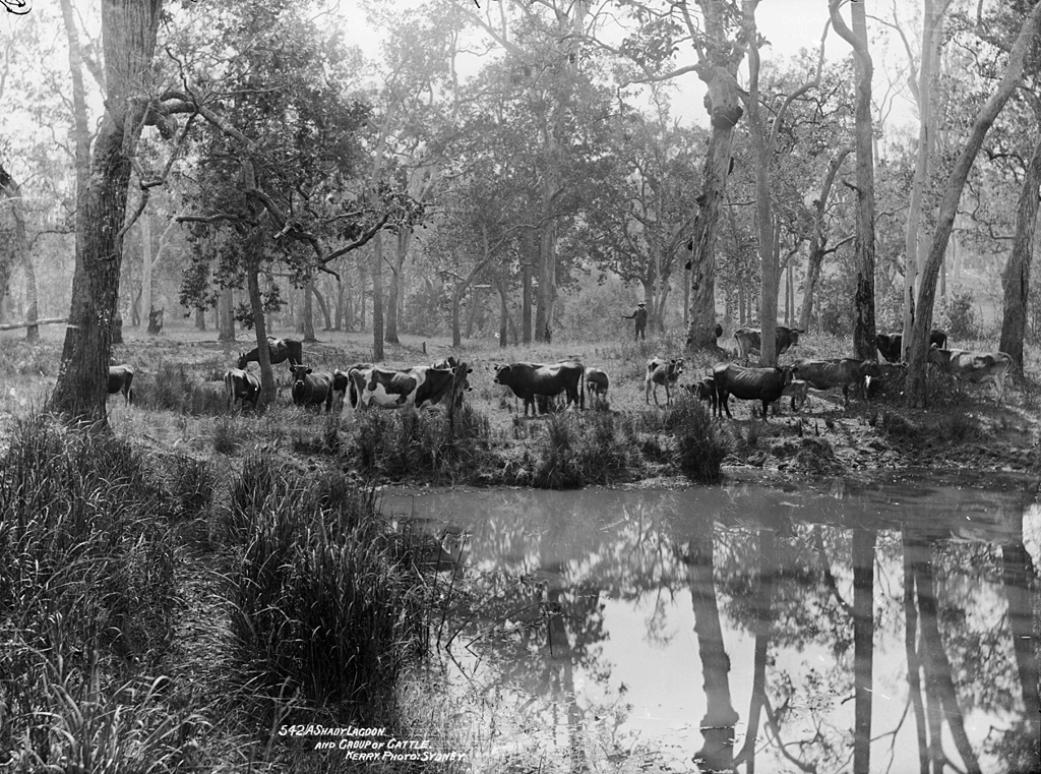
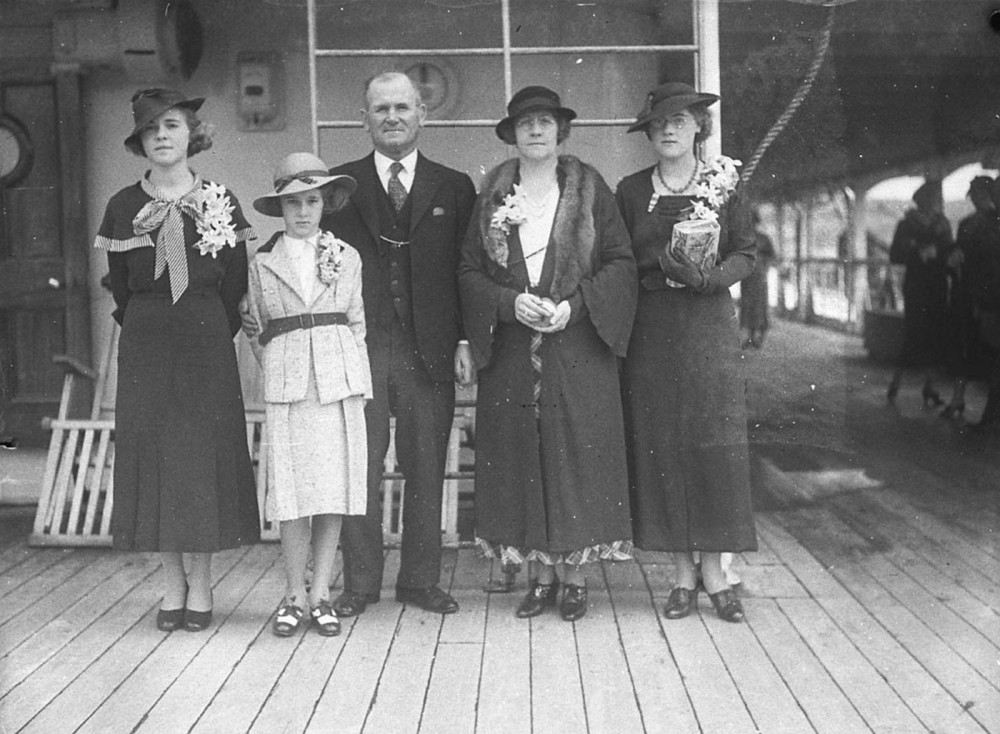
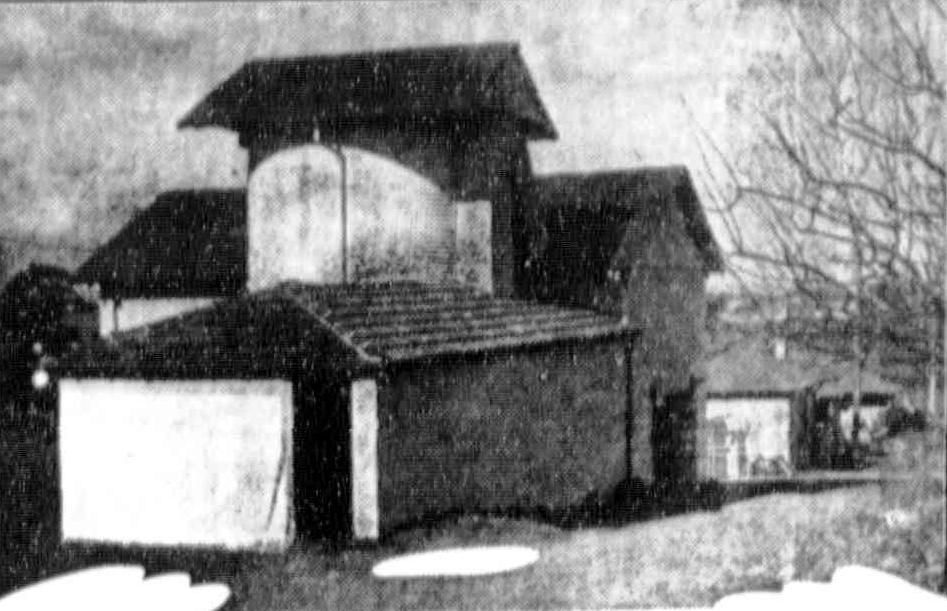
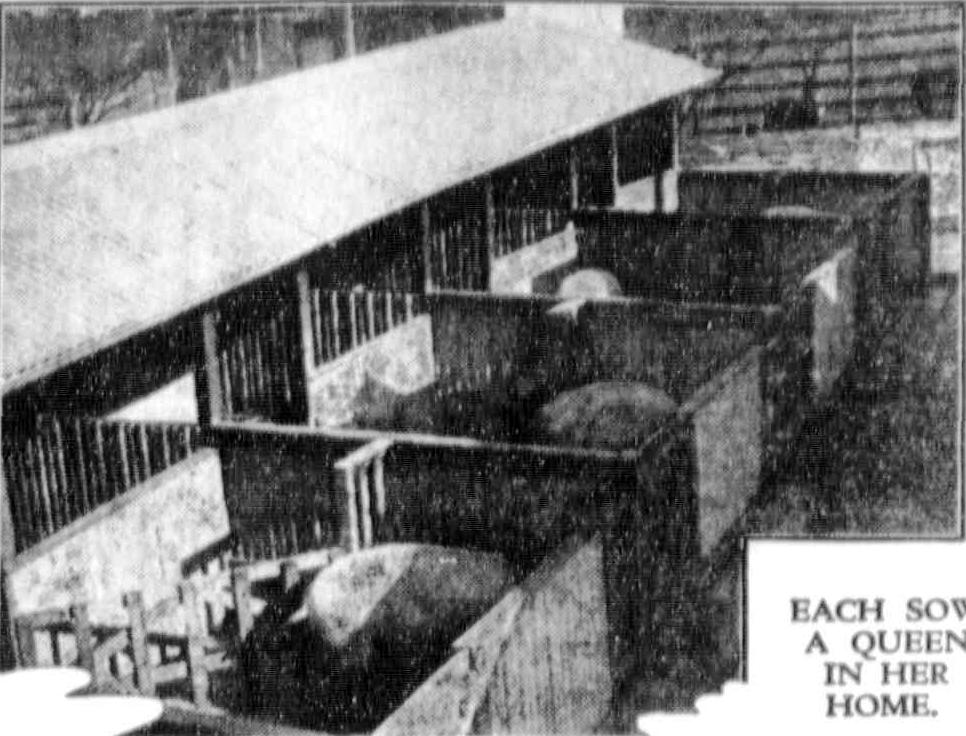
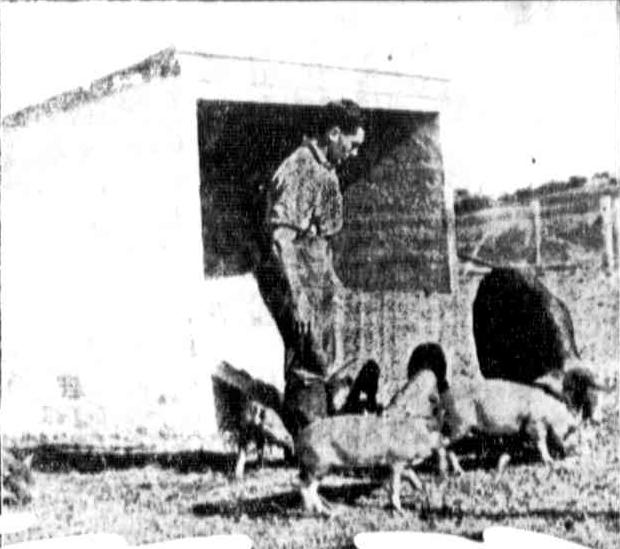
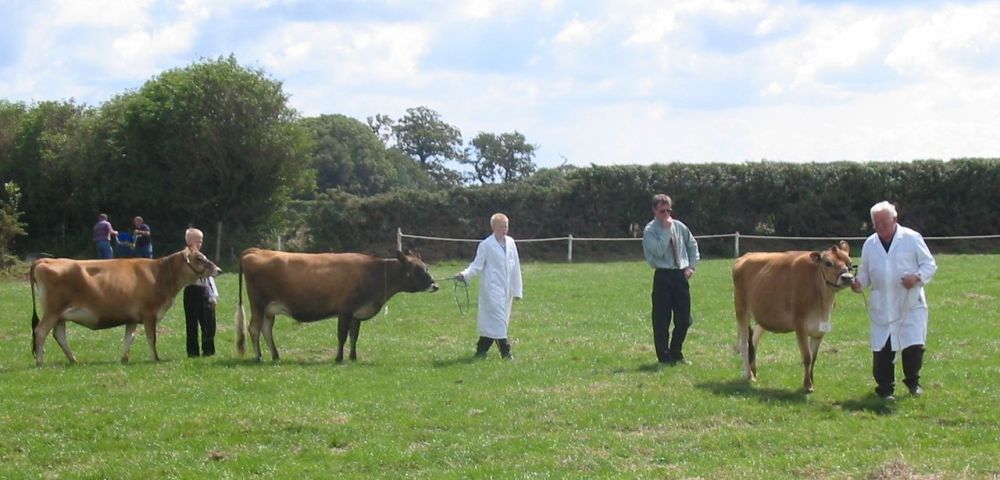
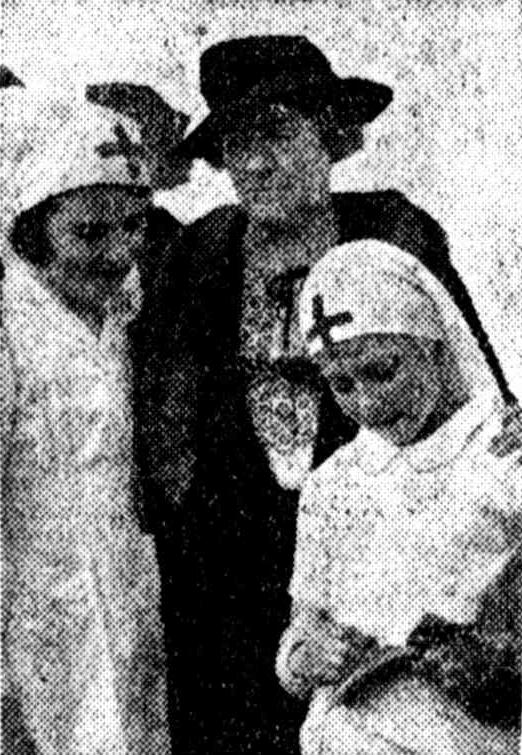
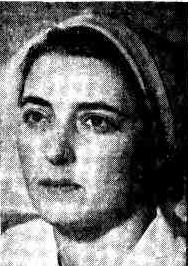 To Marry Sir Frederick Stewart
To Marry Sir Frederick Stewart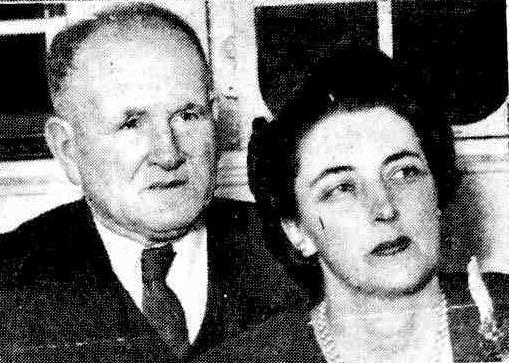 RIGHT: PASSENGERS by the Orion today from London were Sir Frederick and Lady Stewart. Sir Frederick was critical of the Socialistic schemes of the British Labor Government. Out to beat polio (1949, September 9).The Sun (Sydney, NSW : 1910 - 1954), p. 5 (LATE FINAL EXTRA). Retrieved from http://nla.gov.au/nla.news-article230933902
RIGHT: PASSENGERS by the Orion today from London were Sir Frederick and Lady Stewart. Sir Frederick was critical of the Socialistic schemes of the British Labor Government. Out to beat polio (1949, September 9).The Sun (Sydney, NSW : 1910 - 1954), p. 5 (LATE FINAL EXTRA). Retrieved from http://nla.gov.au/nla.news-article230933902 